A map, a phone number, and an audio tour: how you can visit the grounds of the Emily Dickinson Museum—without leaving your house in a lockdown.
The Emily Dickinson House Museum
For years I longed to visit Emily Dickinson’s birthplace and house museum in Amherst, Massachusetts, and—thanks to my artist friends who help me set goals every year—this dream was realized in September 2019. Who knew that 2020 would see such treasured museums firmly closed and that it was so urgent to go then?
While there on the 90-mile day trip west of Boston with my husband for our wedding anniversary, we enjoyed a guided tour of the house, bought postcards, and wandered in the gardens with an audio guide device.
In getting ready to mail thank you cards to those same friends who keep me accountable, I realized a treasure. The audio tour of the grounds is available by phone. (Also by mobile browser app, I found when I wrote this piece. All links below.)
However before popping my only copy of the on-site brochure in with a thank you note, I took time to make a sketch of the grounds for you, dear reader, so you too may listen in to the tour with a map in hand.
A black and white version and a color inked map reside at the end of this post, yours to download, print and enjoy. Visiting Massachusetts may be off the table and the museum closed to the public, but you can take a break and enjoy an hour with Emily.
First let me take you there myself.
Chocolate Wrappers and Roses
My favorite part of the indoor tour was being handed a scrap of laminated chocolate wrapper while standing in the poet’s bedroom, on the back of which were scribbled word scraps in pencil. (… Chocolate from Paris, I noted).
Emily did the daily baking for the household, would jot her ideas on such scraps of paper, stuff them in her apron pocket, and take these out in the evening in her room to gather her word scraps into poems.
A Franklin stove beside her, an oil lamp on the modest desk, the view from her desk forms the museum logo. Her desk looked out on the grounds between her parents’ home where she lived with her unmarried sister Lavinia, to the Italianate villa built by her brother Austin, for his wife Susan and their three children. The path between the two—‘wide enough for those who love’—connected the two homes and Emily was a lively guest at the frequent social gatherings thrown by Susan, occasions that were the talk of the town.
Our visit fleshed out the sepia image of an austere and timid poet sheltered from all social contact. Emily came to vivid life there in her rose wallpapered room, with the modest writing table and the warm rush-matted floor underfoot, a chocolate wrapper in my surprised hand.
Under the Dogwood Tree
After the tour of the two homes, both owned by nearby Amherst College and open only since 2003, I spent much time lying under a small dogwood tree on the fir-needle covered grass in the garden, somewhat done in with a headache. (I’d been painting in watercolor at a Red Sox game the day before!) Despite the clobbered head, I enjoyed the pure fall sky, through the dogwood branches, glad to be there, while my English-major husband of course read me Dickinson poems. Before we left, I rallied and sketched the house, but that is for another post.
The Spreading Oak Tree
Most stunning on the three-acre property was the huge oak tree planted by Emily Dickinson’s grandfather, who’d also built the homestead. A hurricane devastated much of New England in 1938 and took out most of the trees at that time growing on the Dickinson property, but this one survived, a grand and glorious remnant that stands sentinal over the Dickinson home and shades the conservatory where Emily grew her beloved plants.
Stop six on the tour describes the enormous oak tree and stop seven the conservatory.
A September Look at the Dickinson Grounds

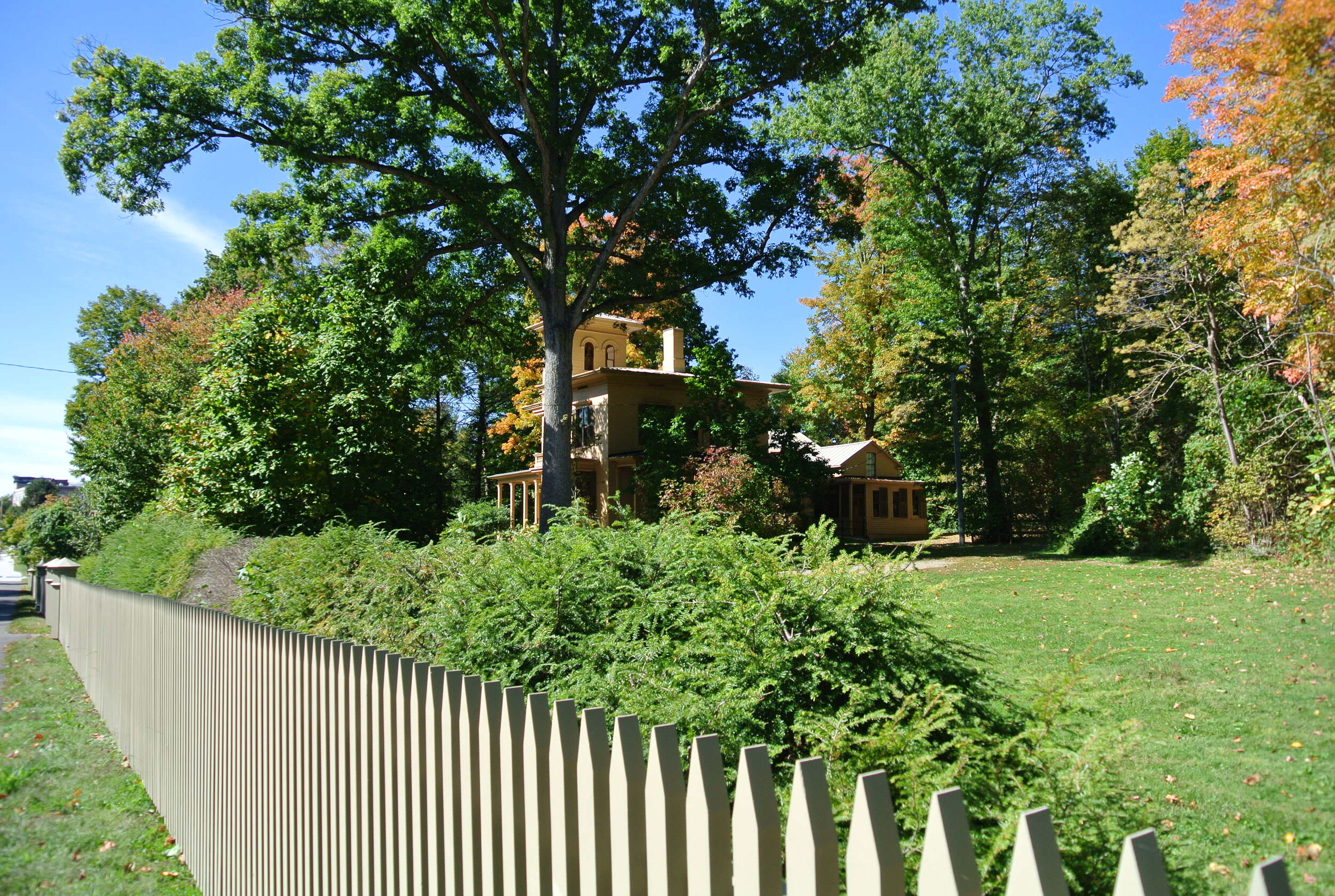
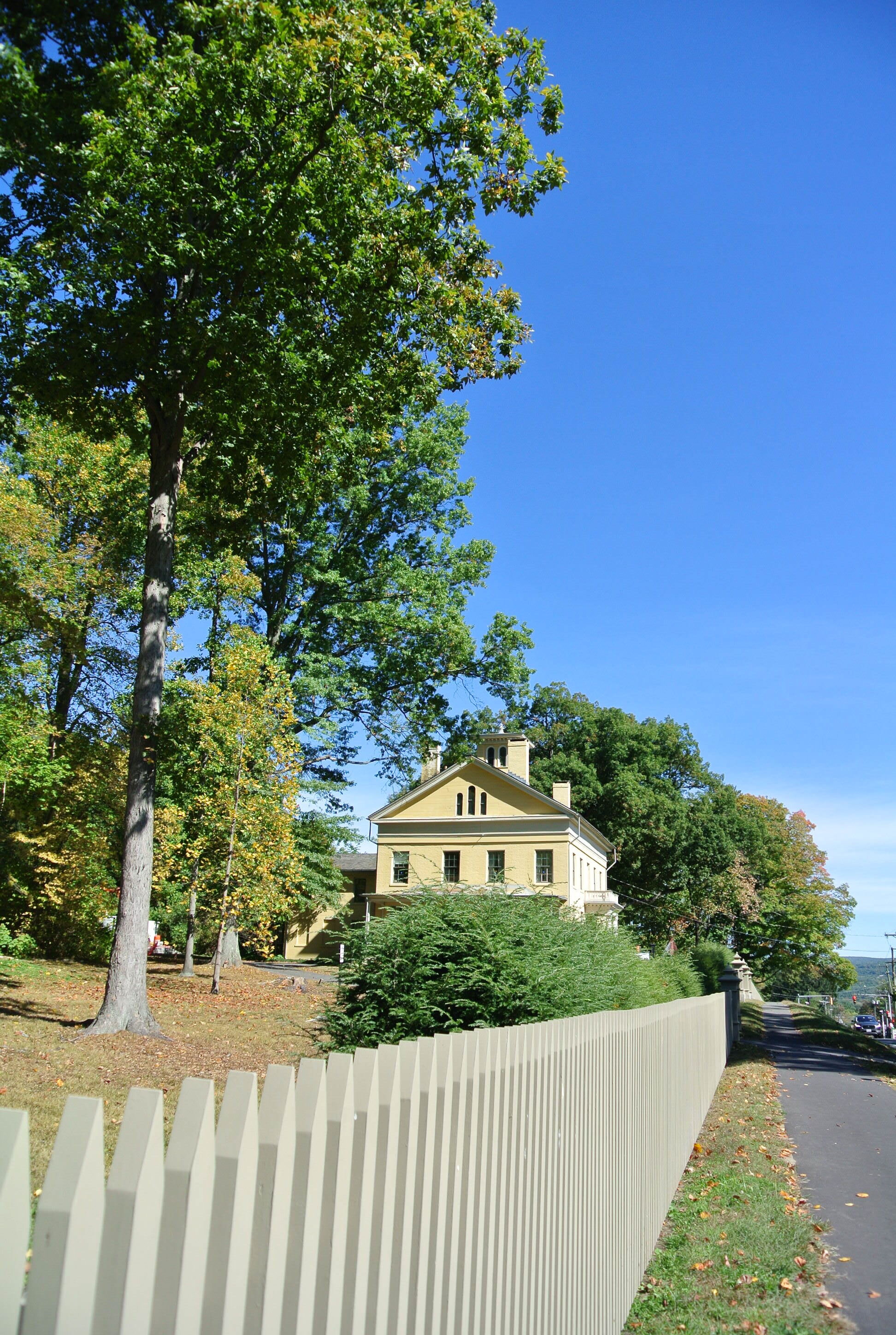
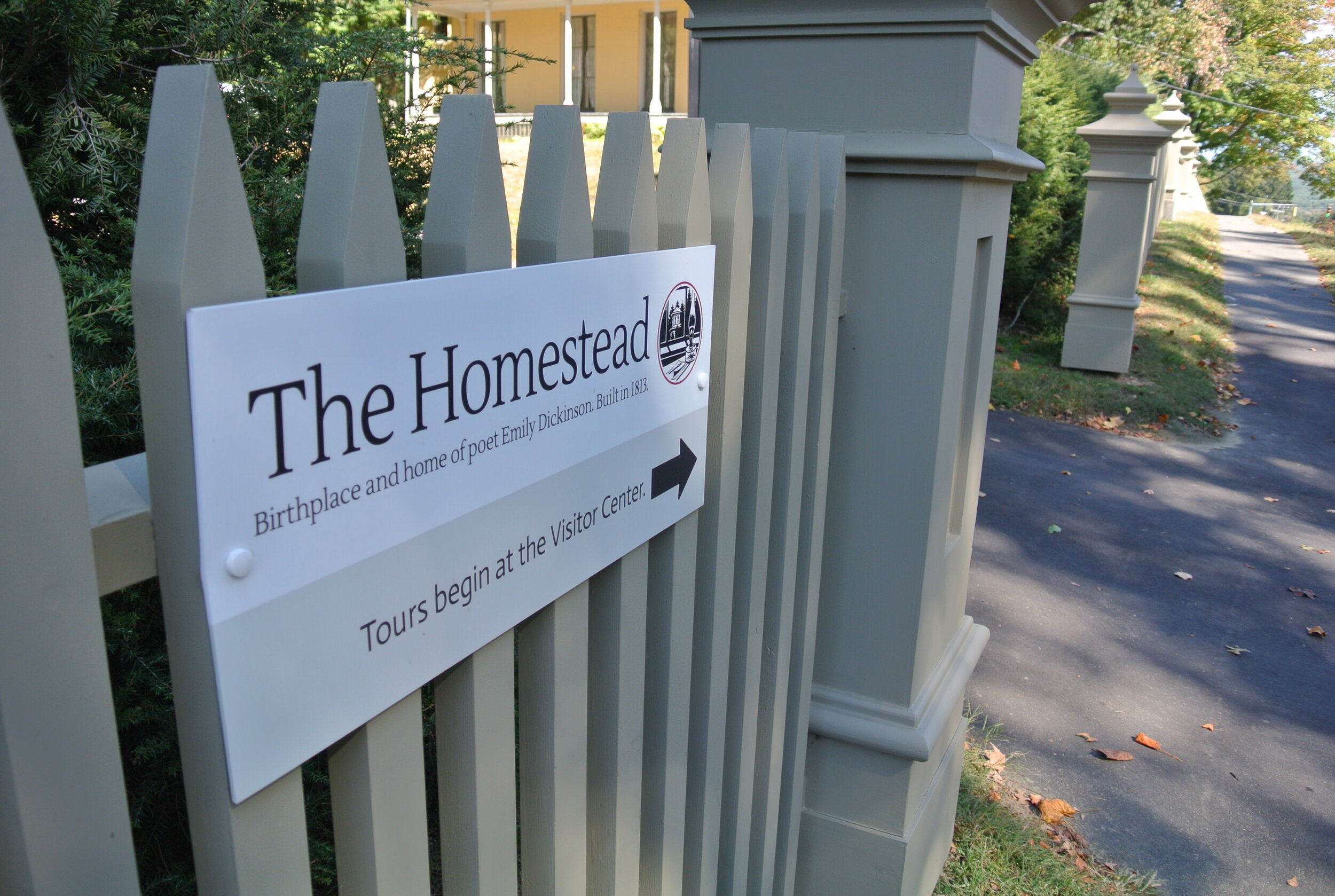



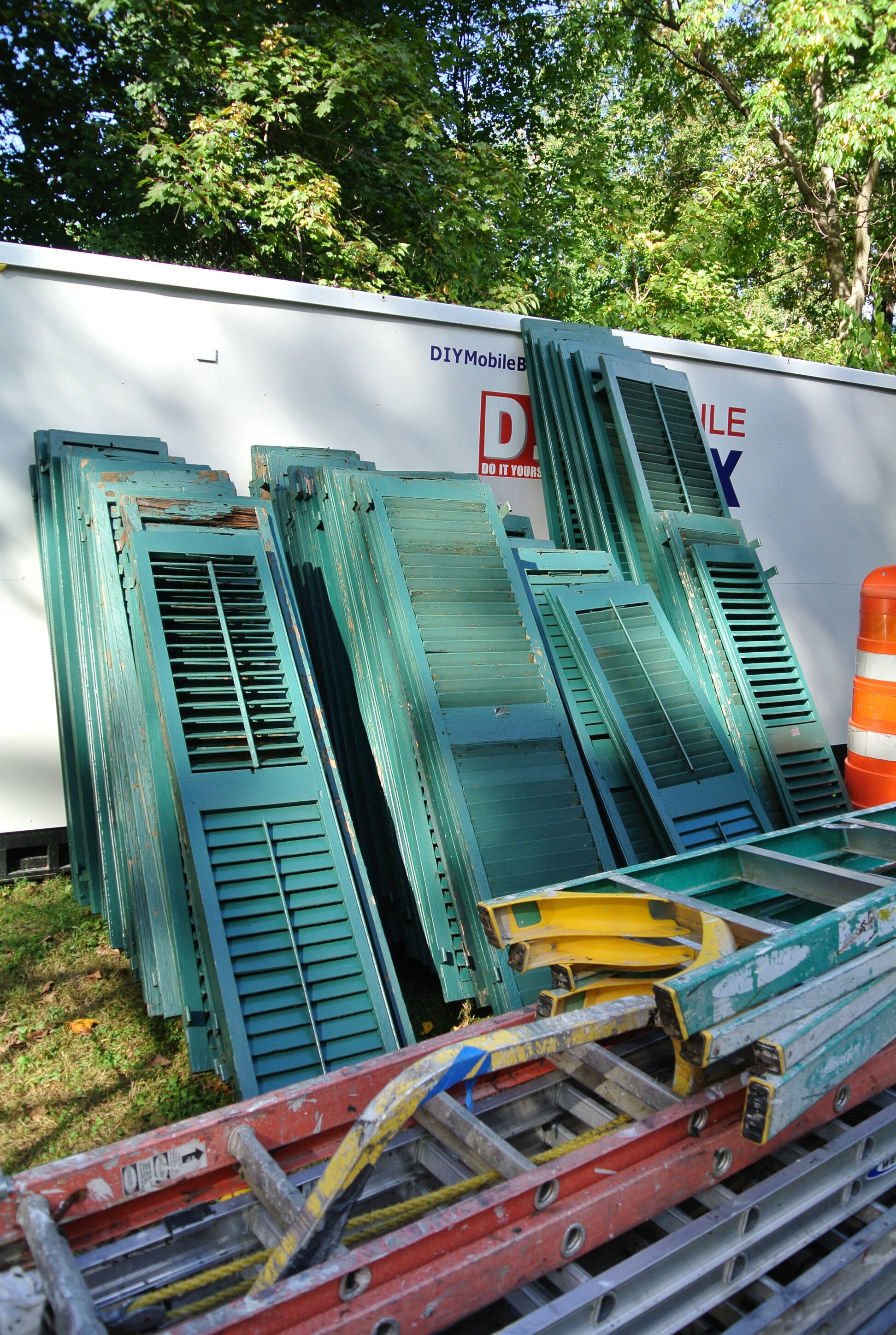
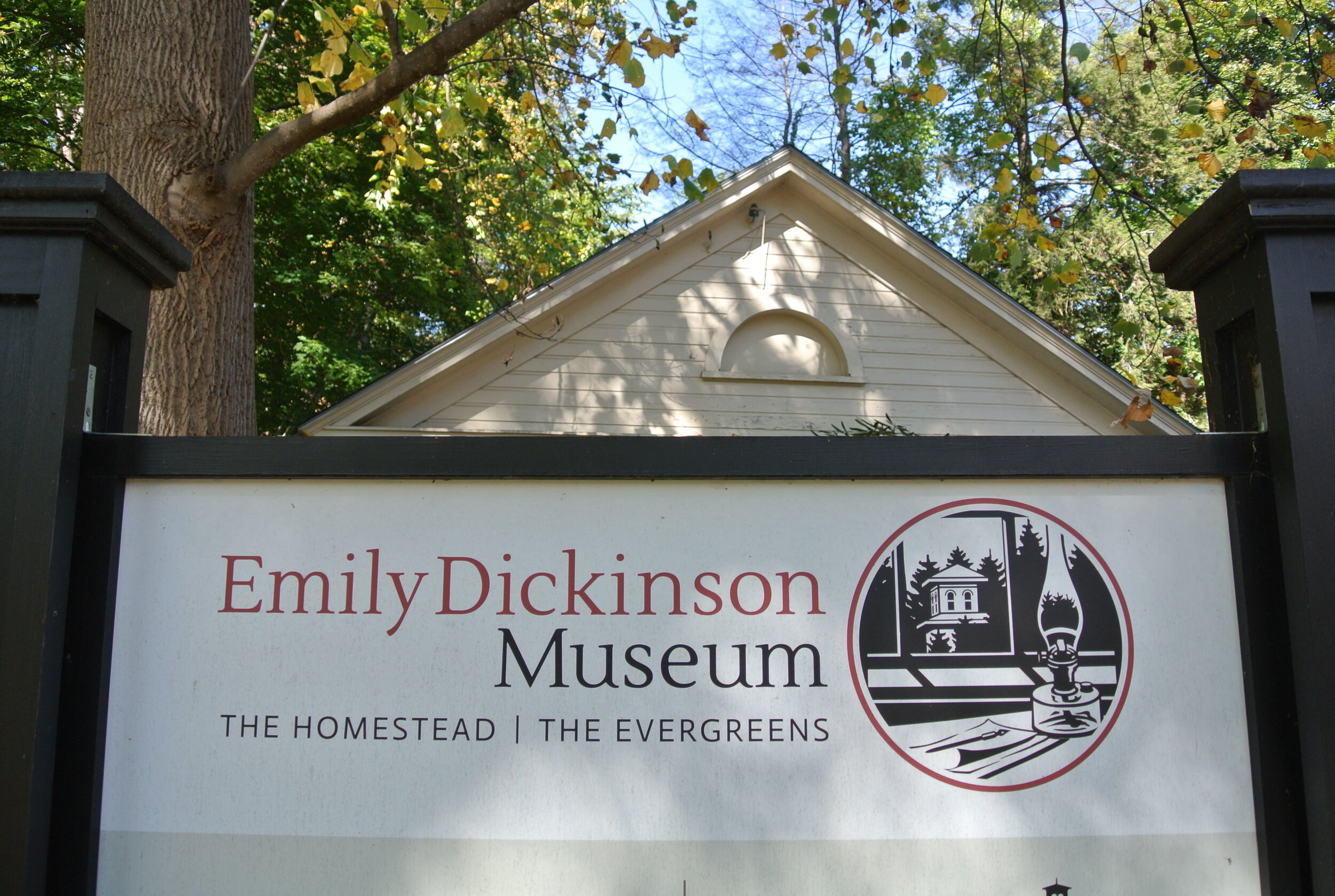
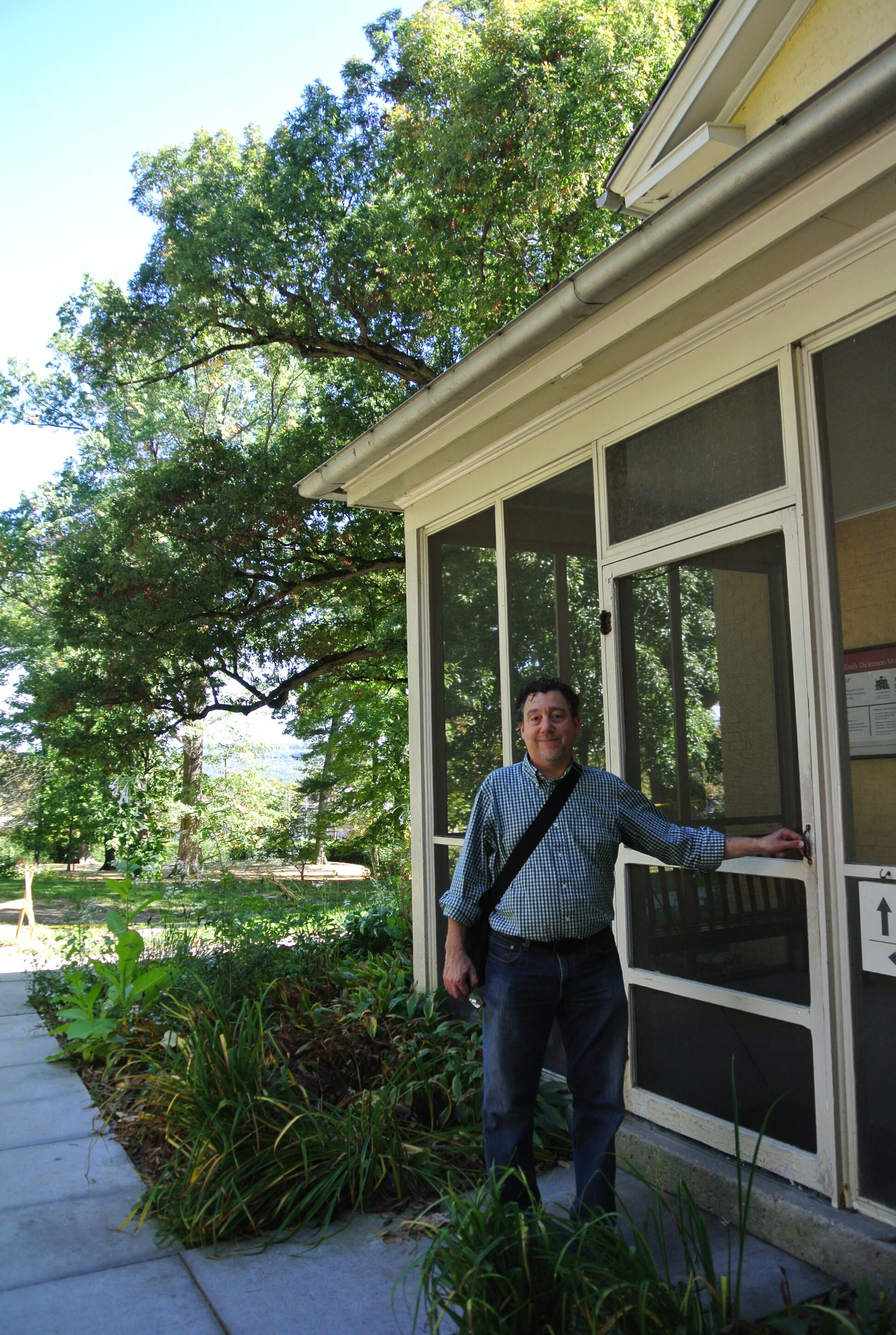
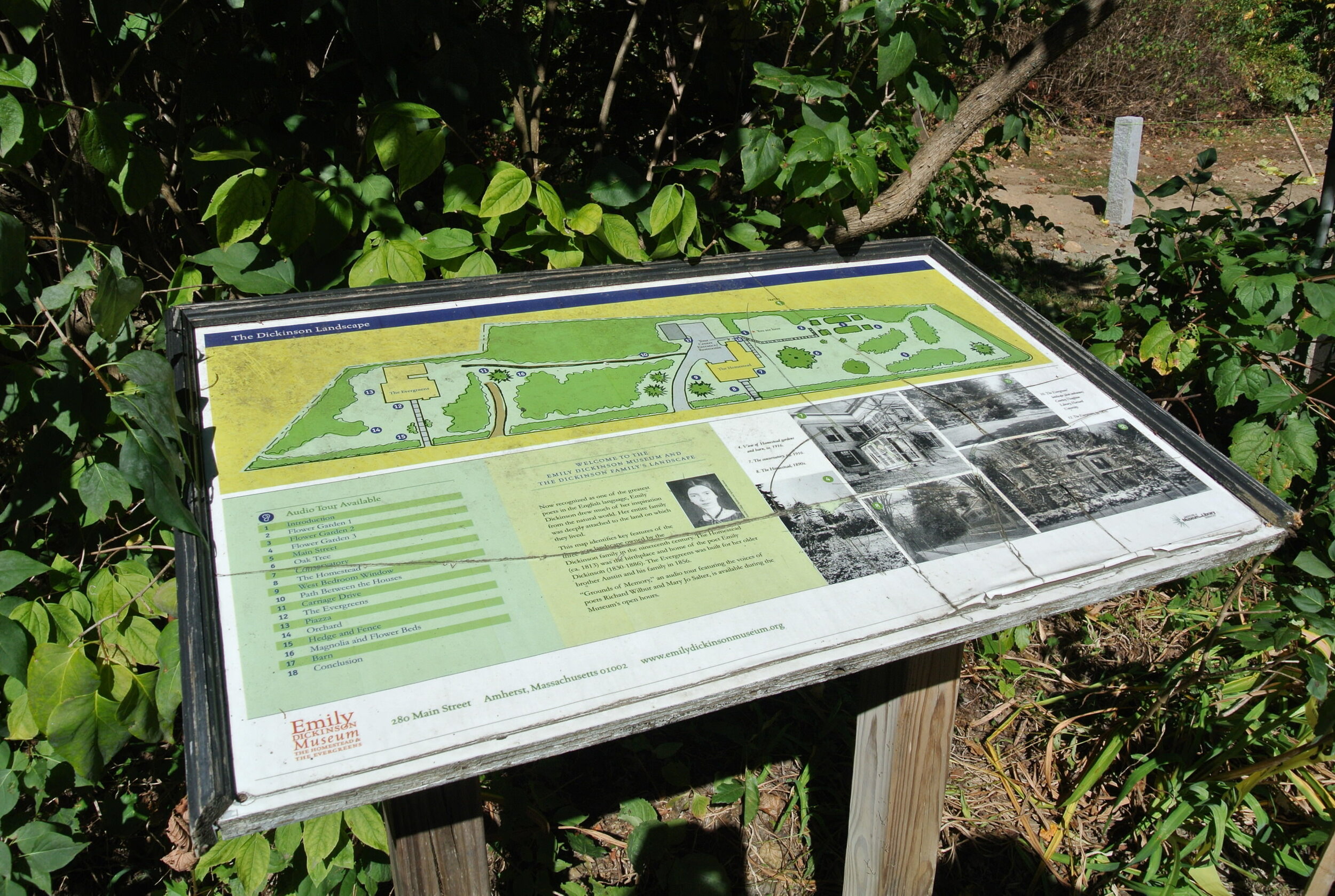
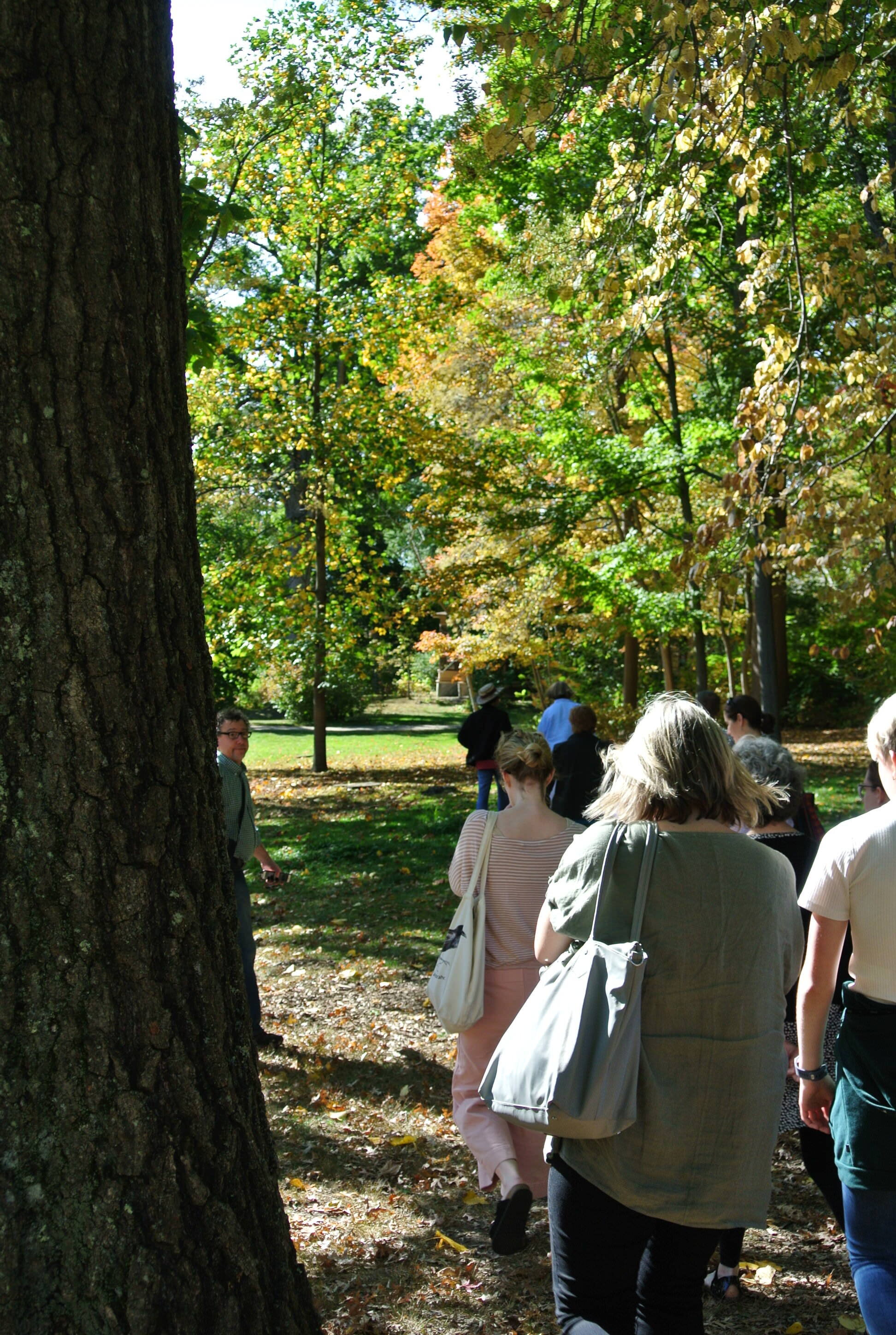
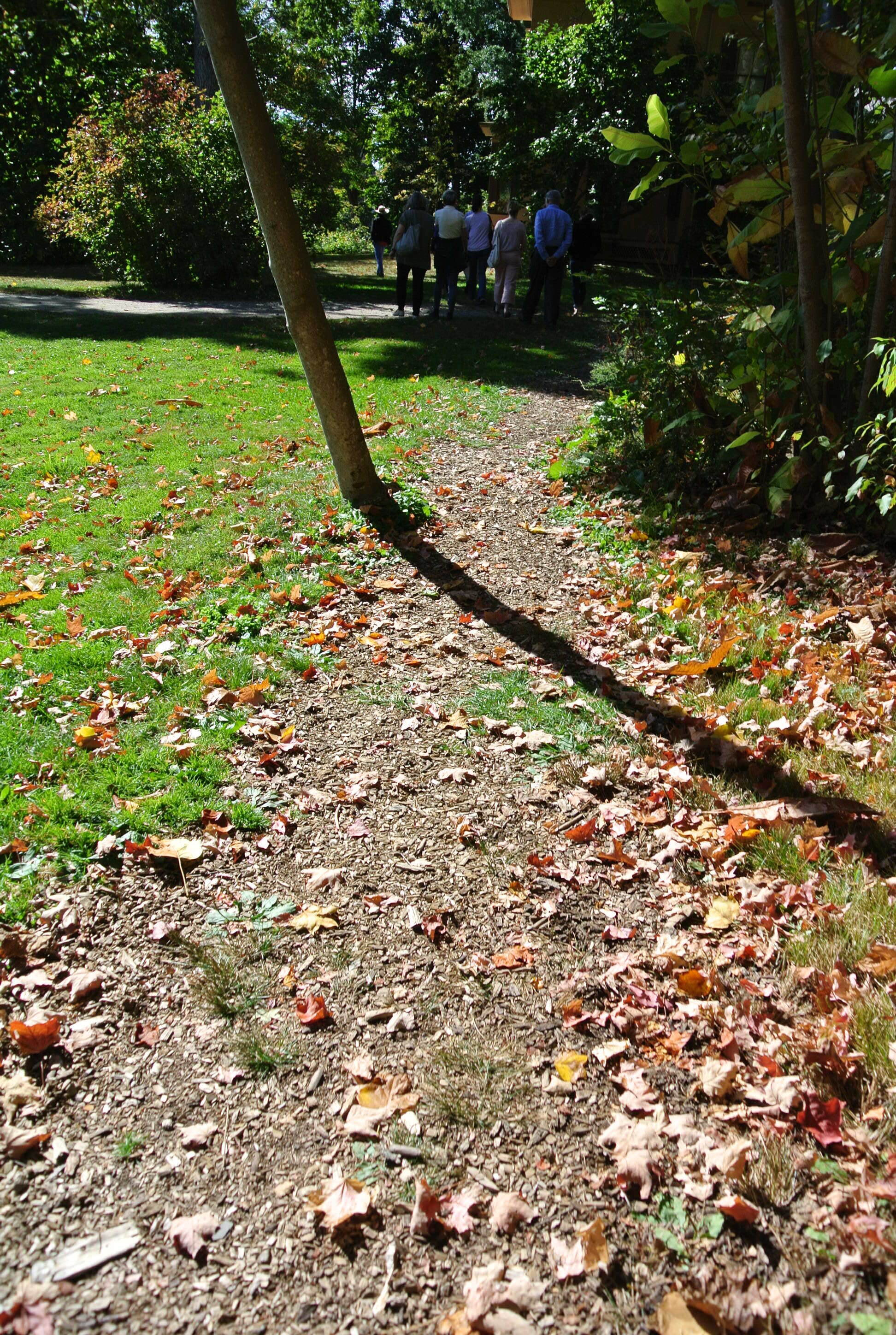
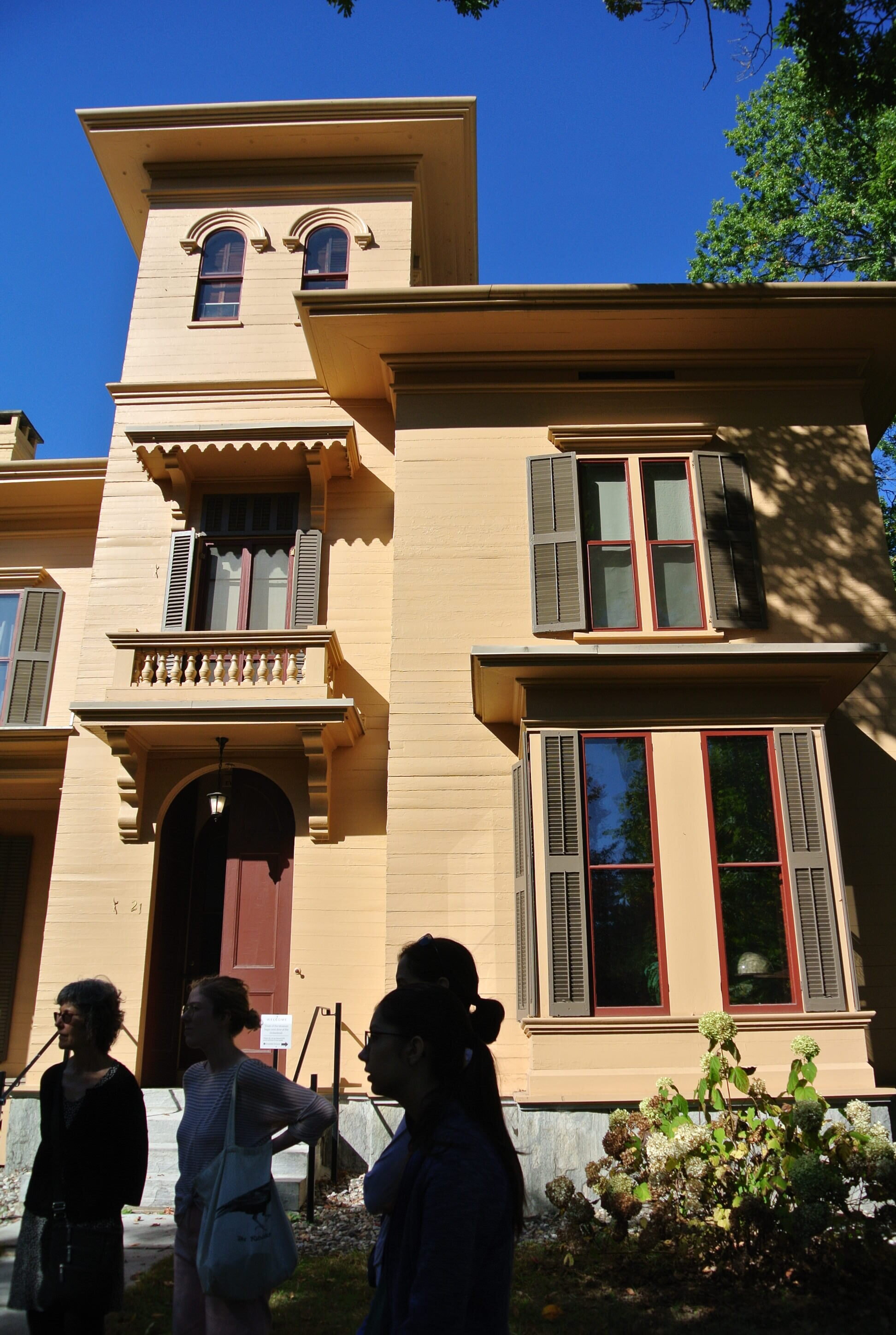
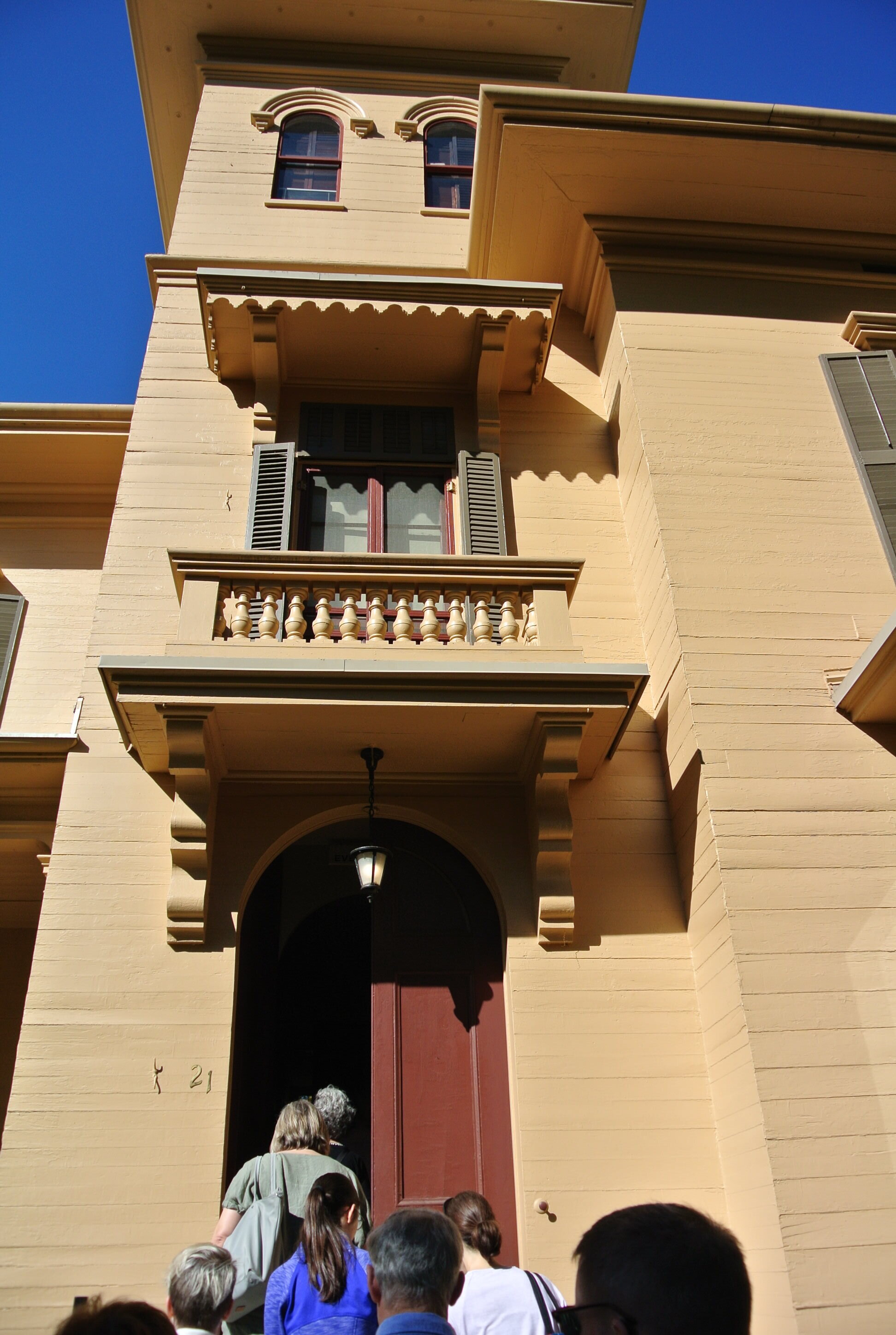
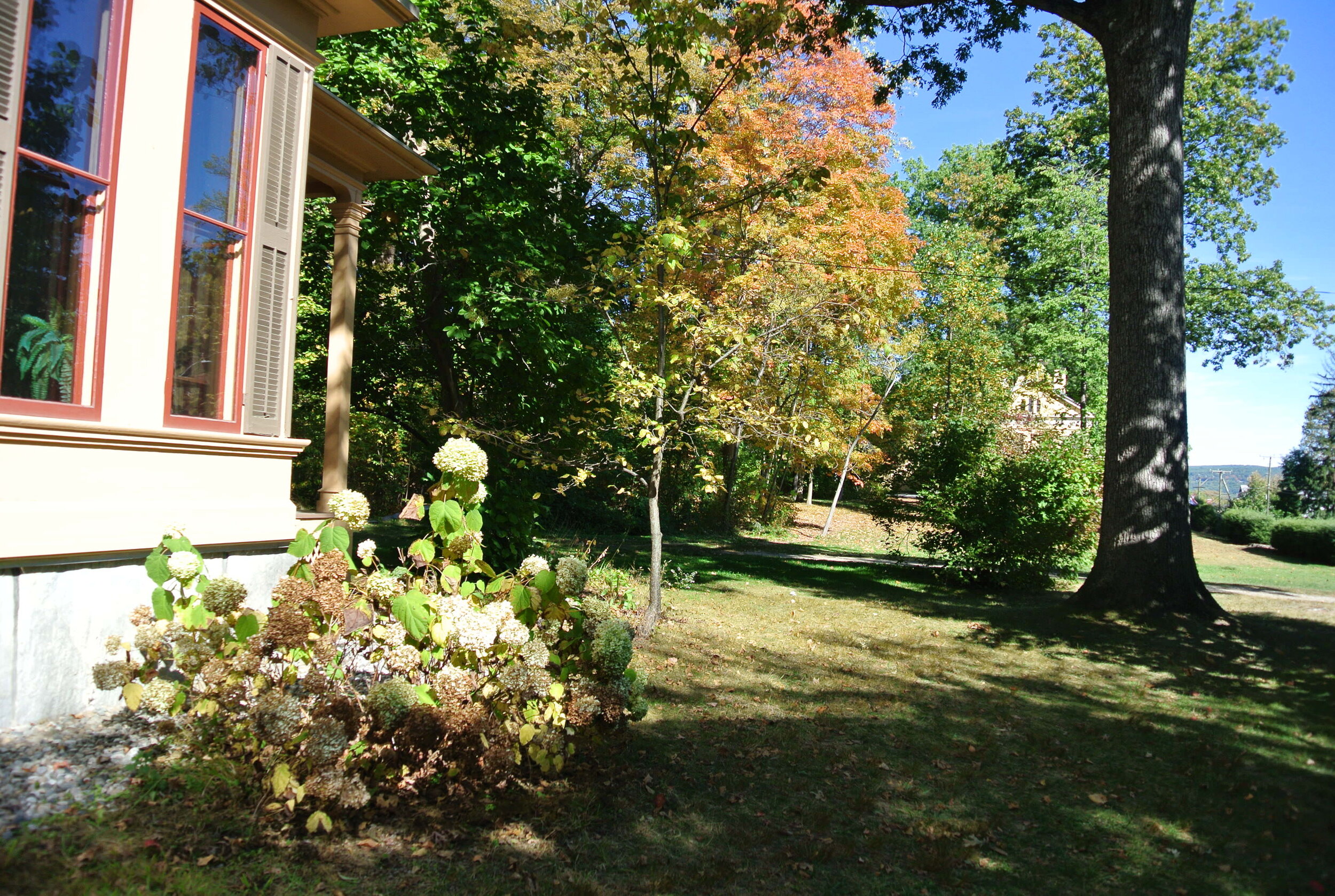
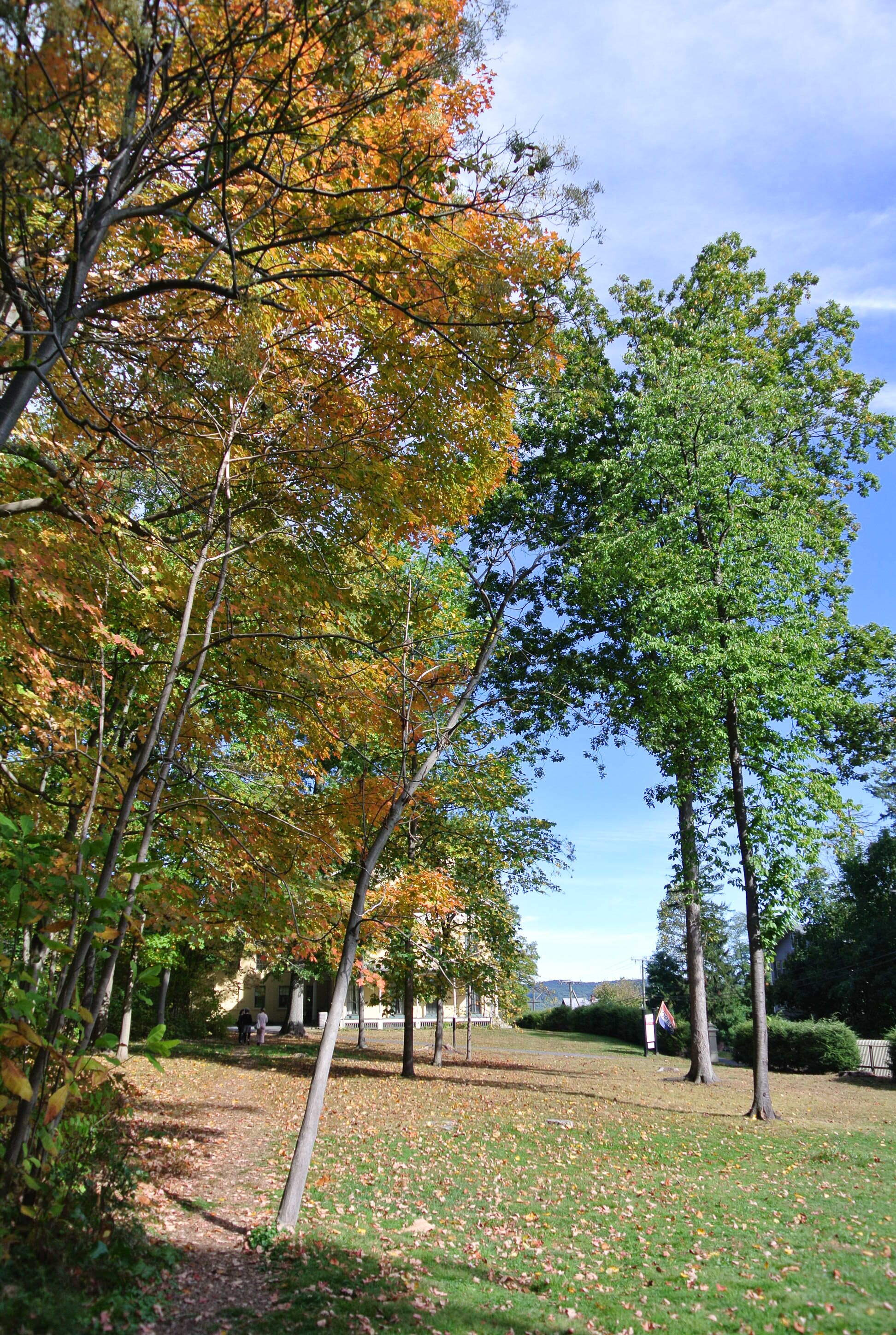
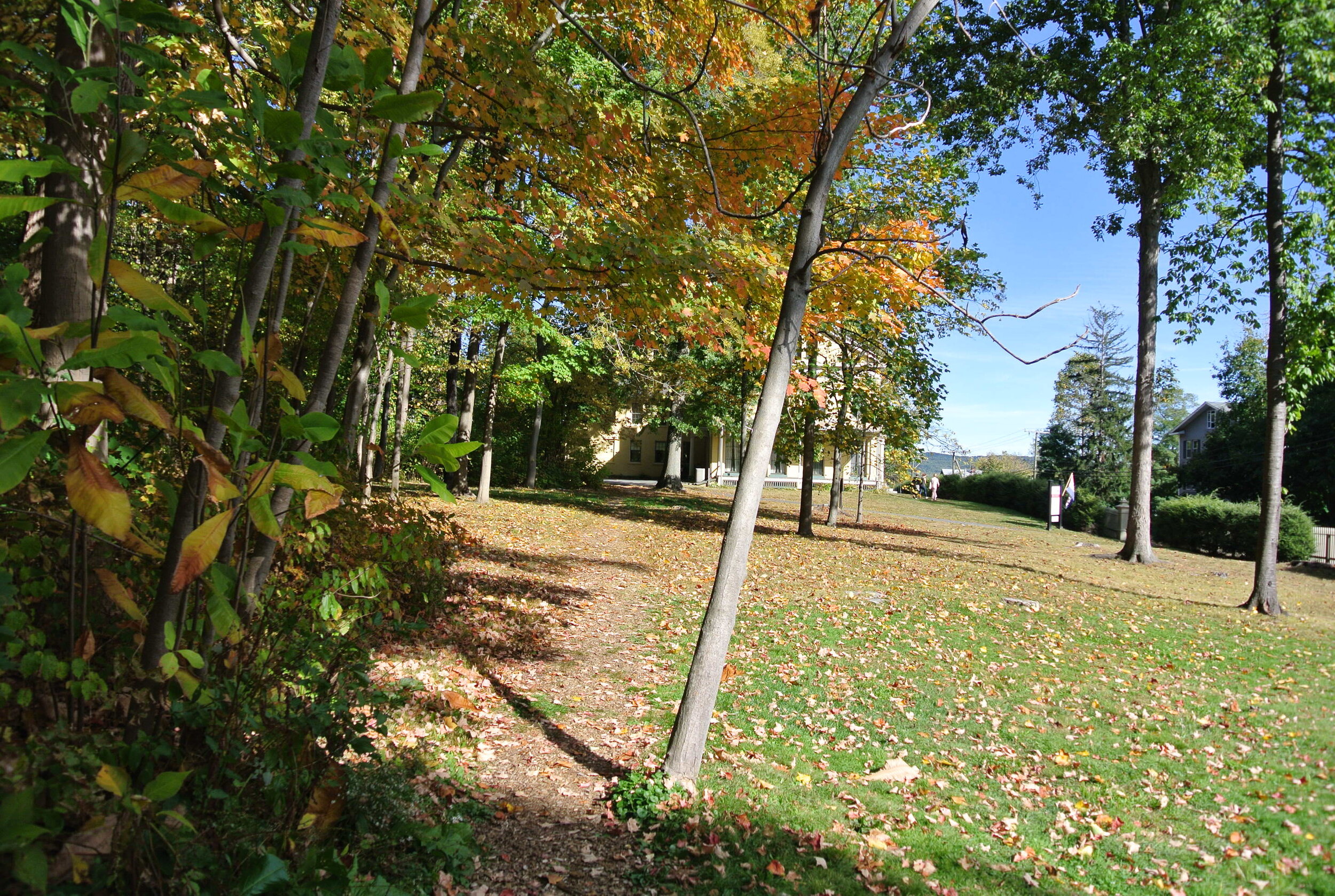

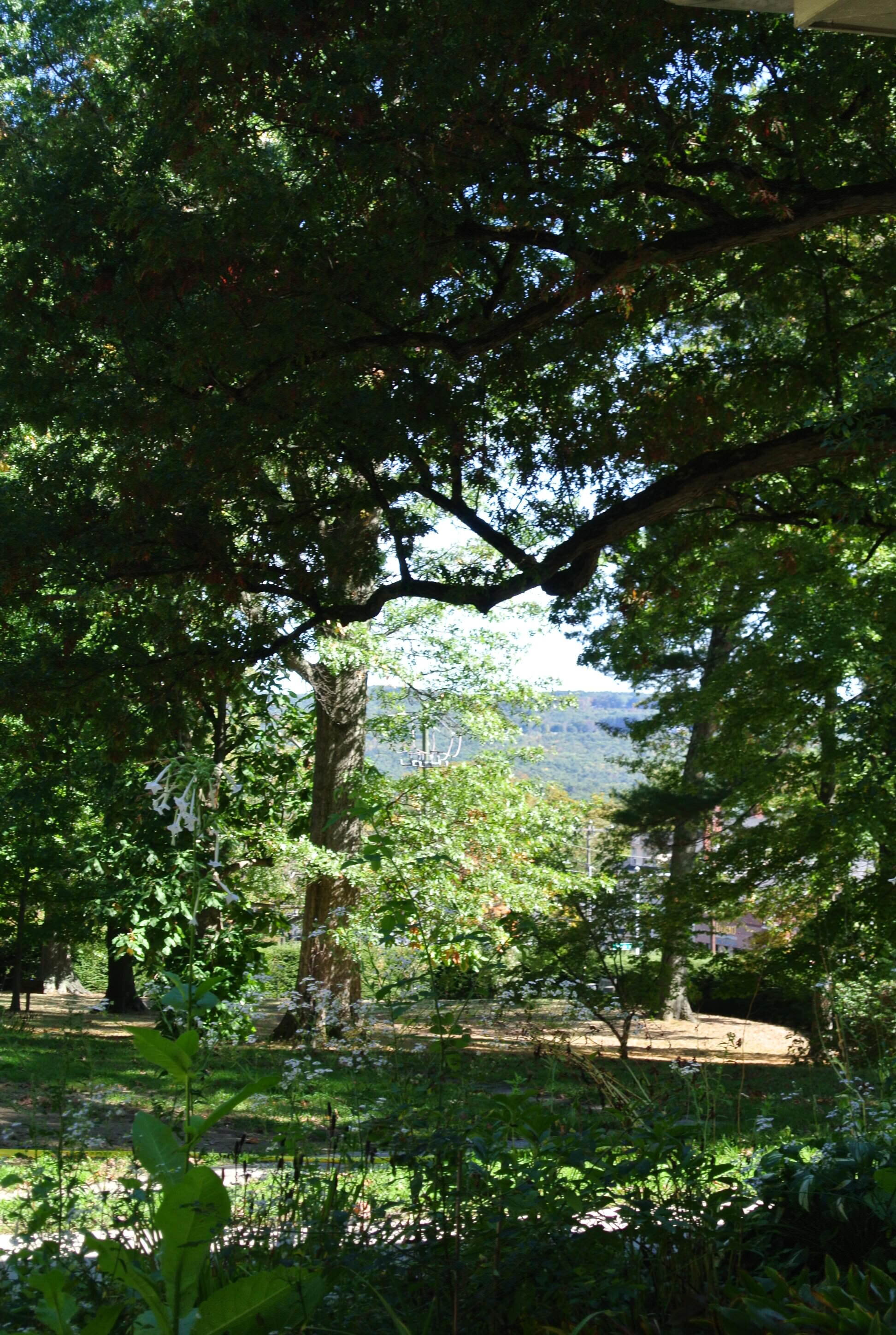

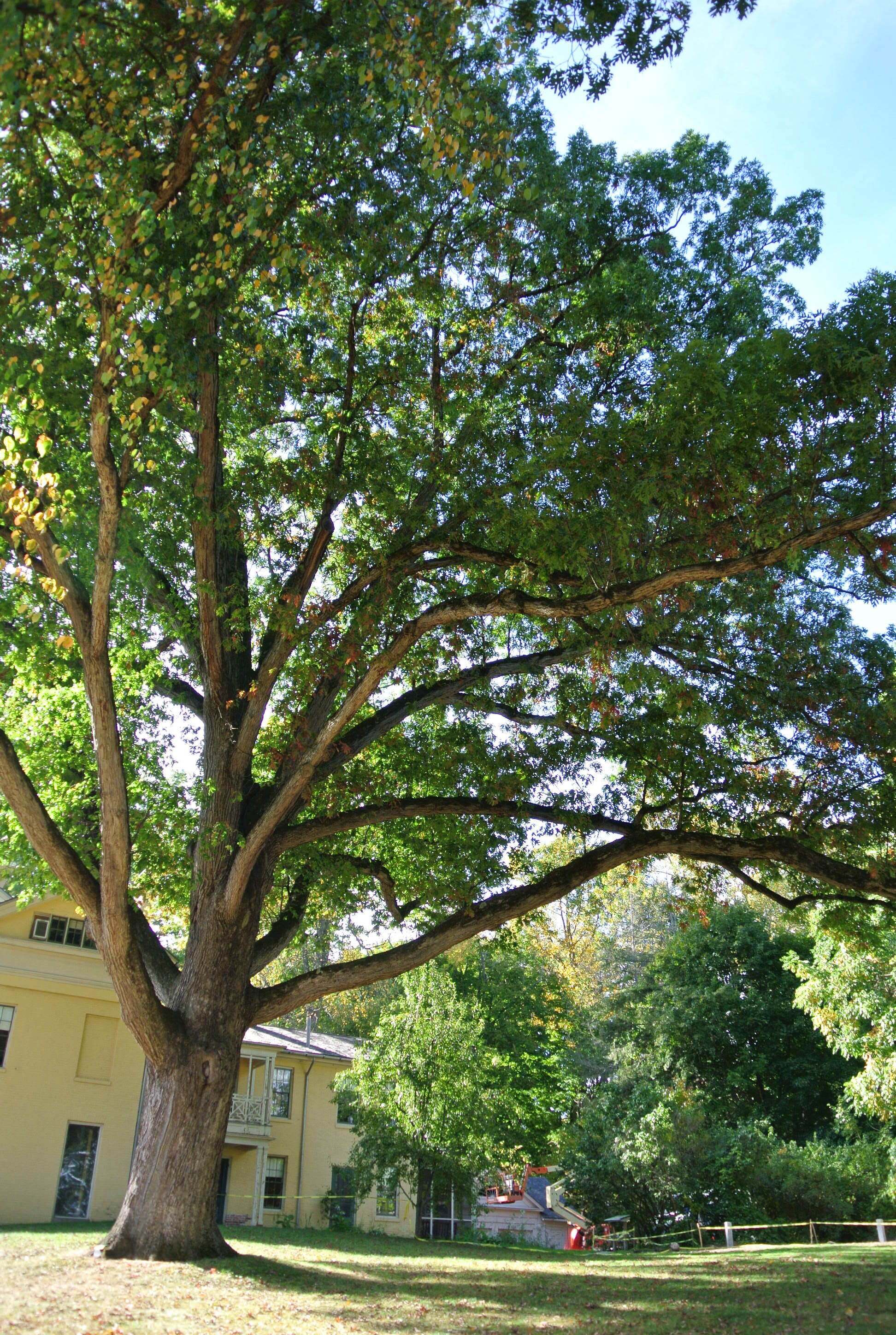
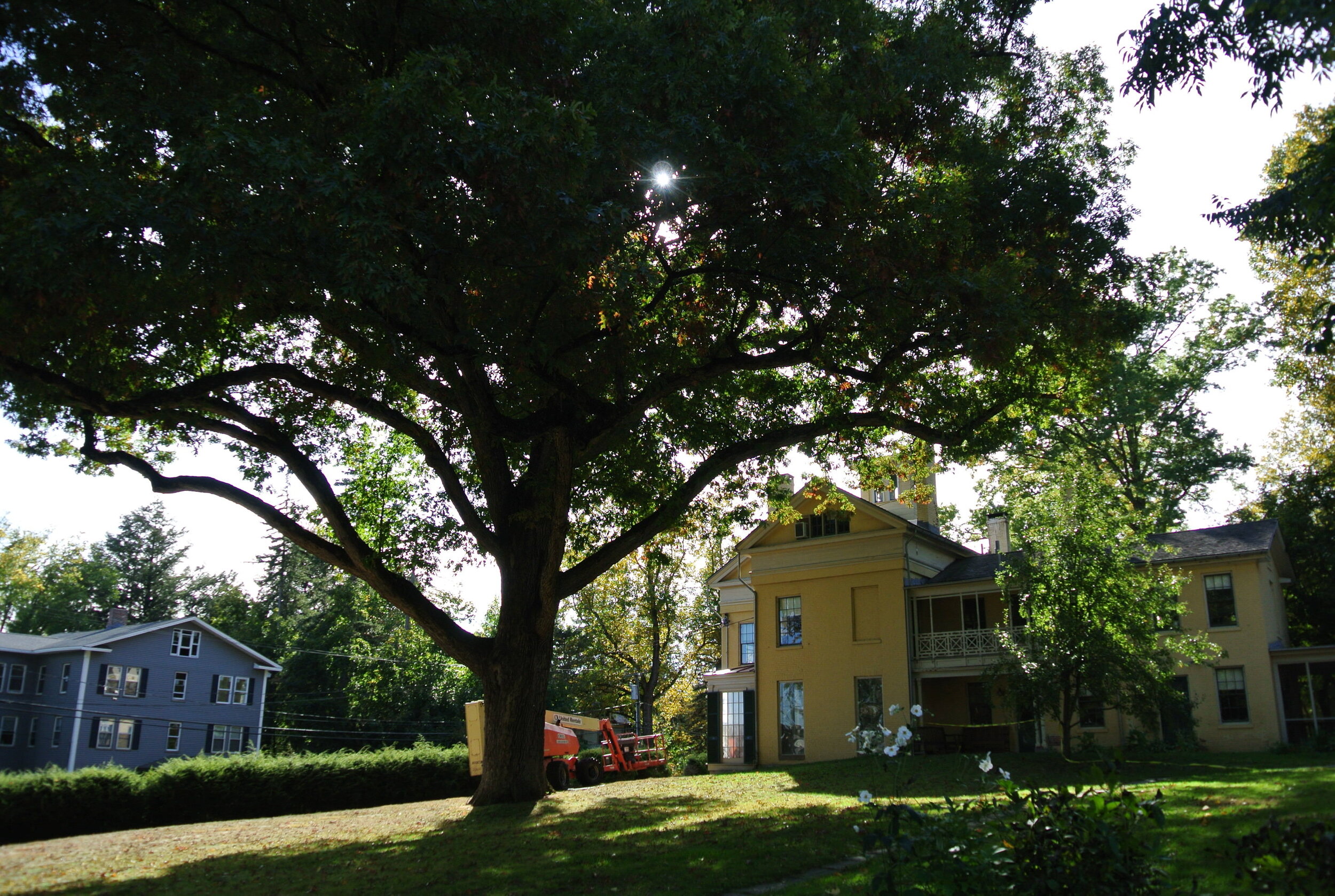
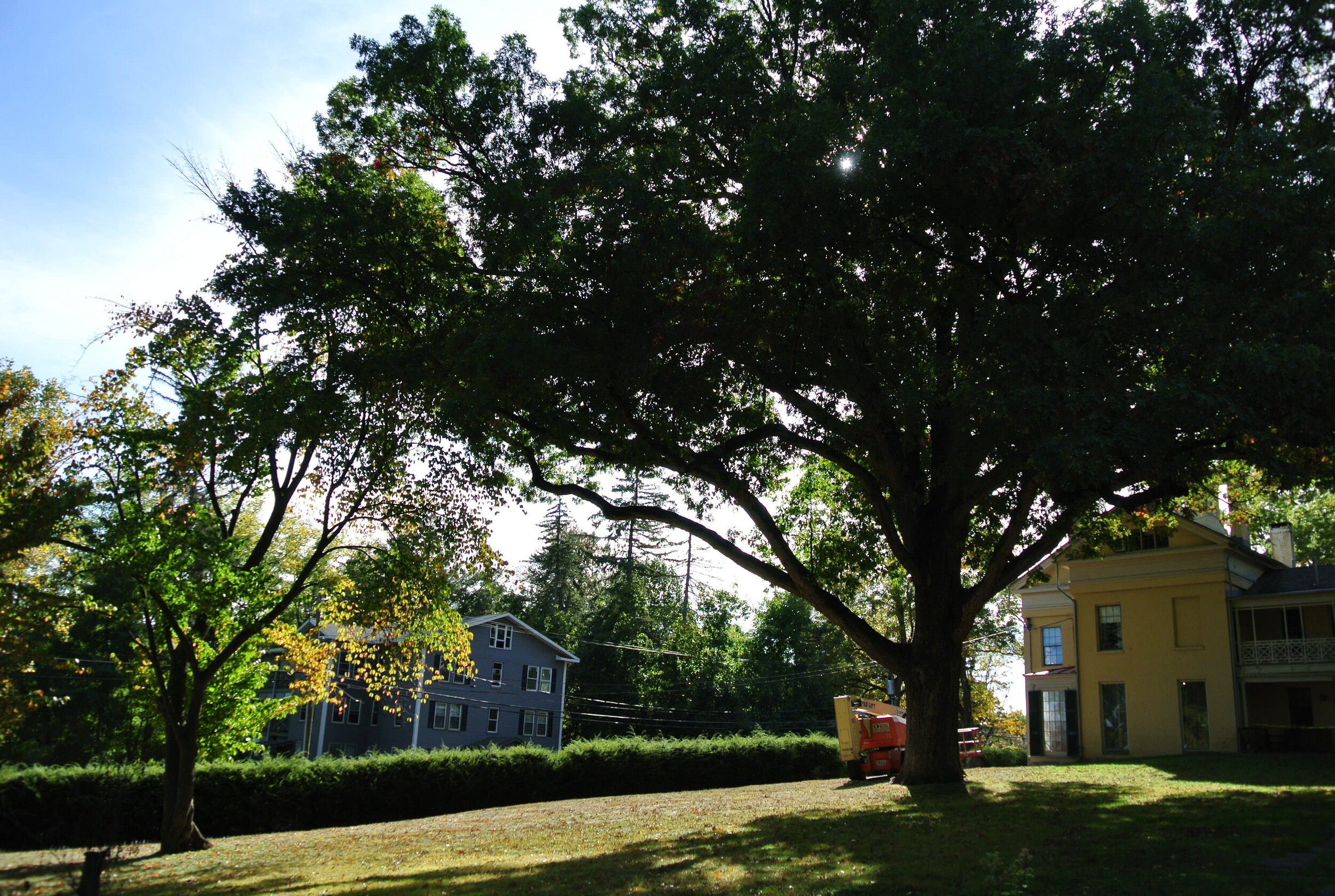
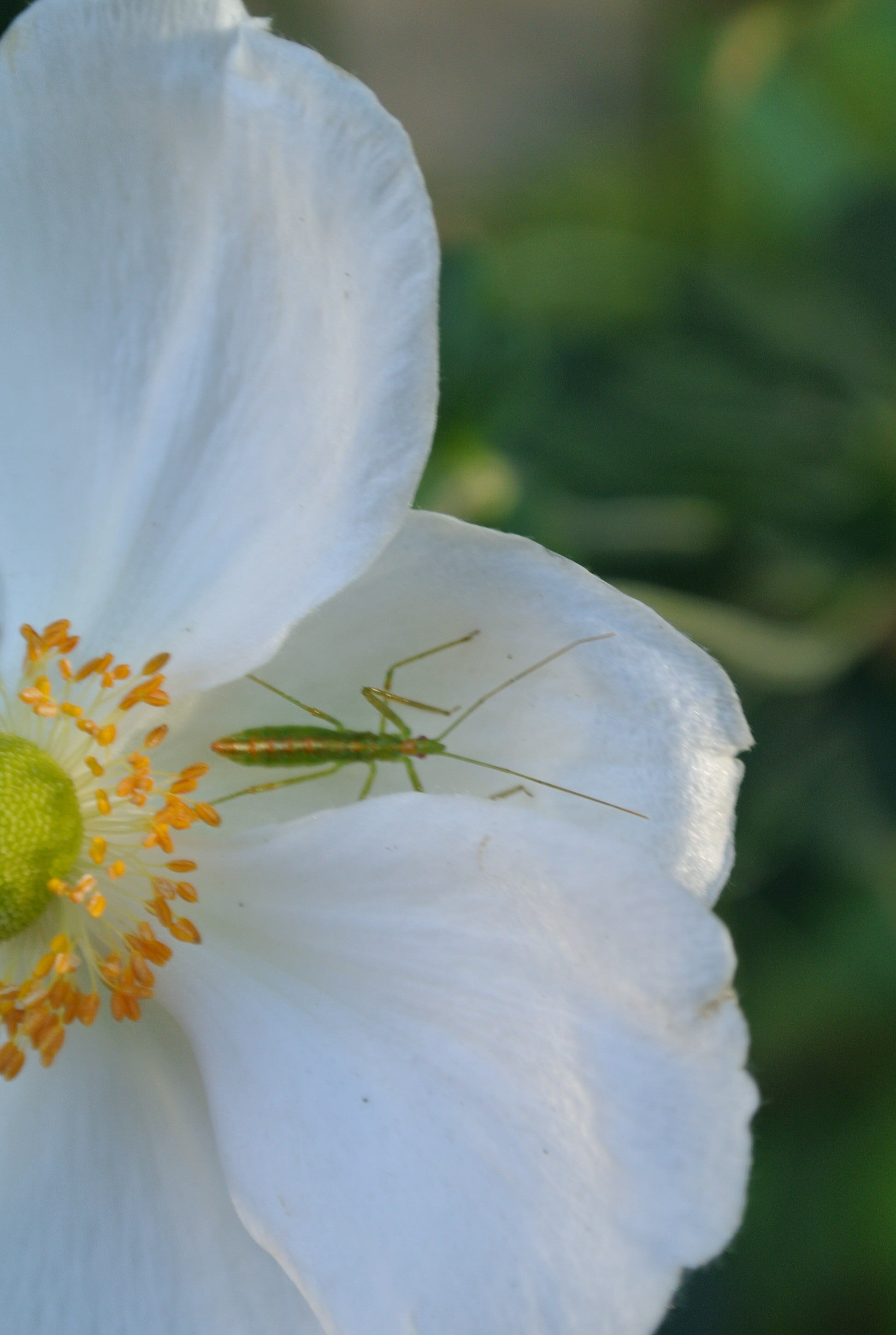
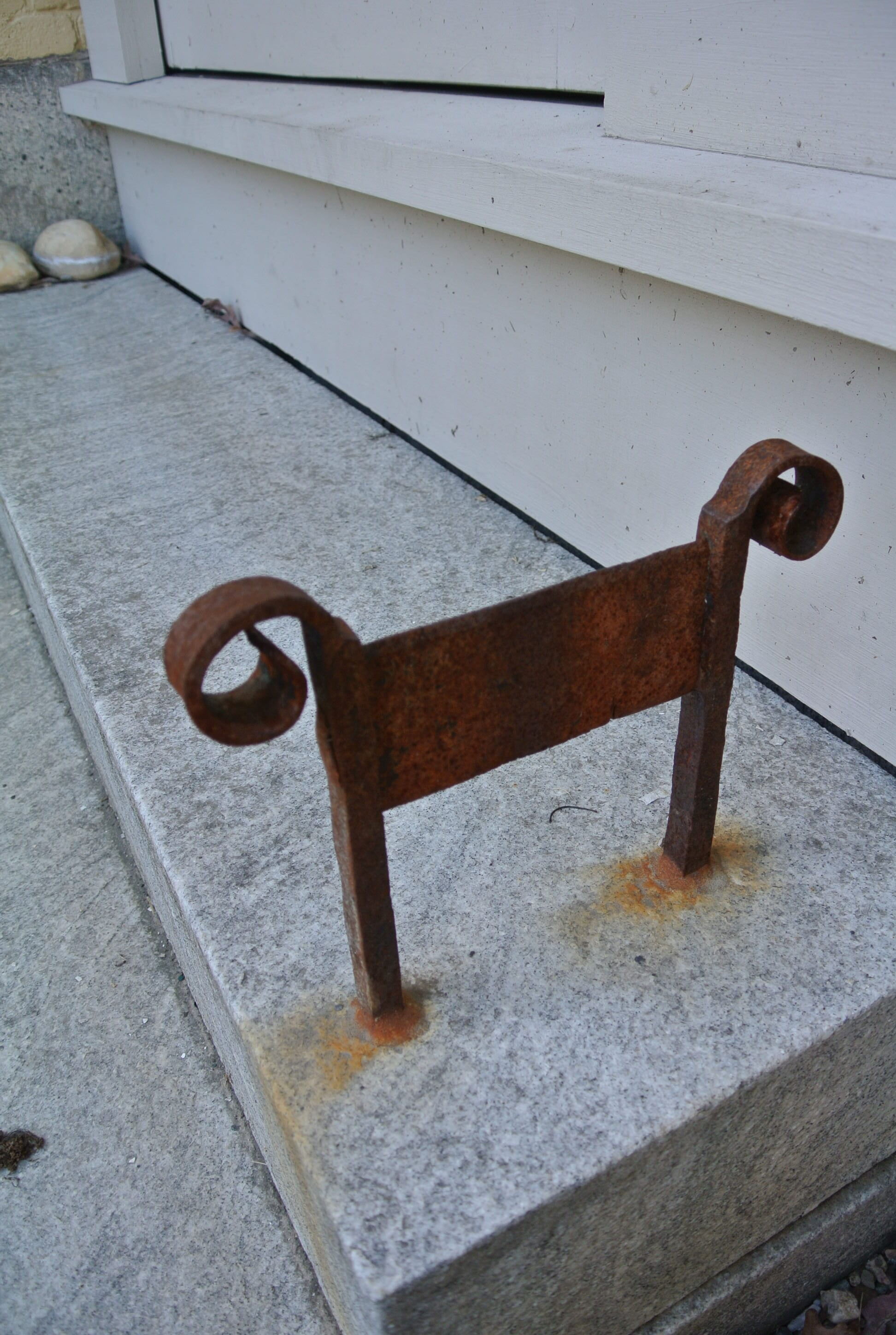
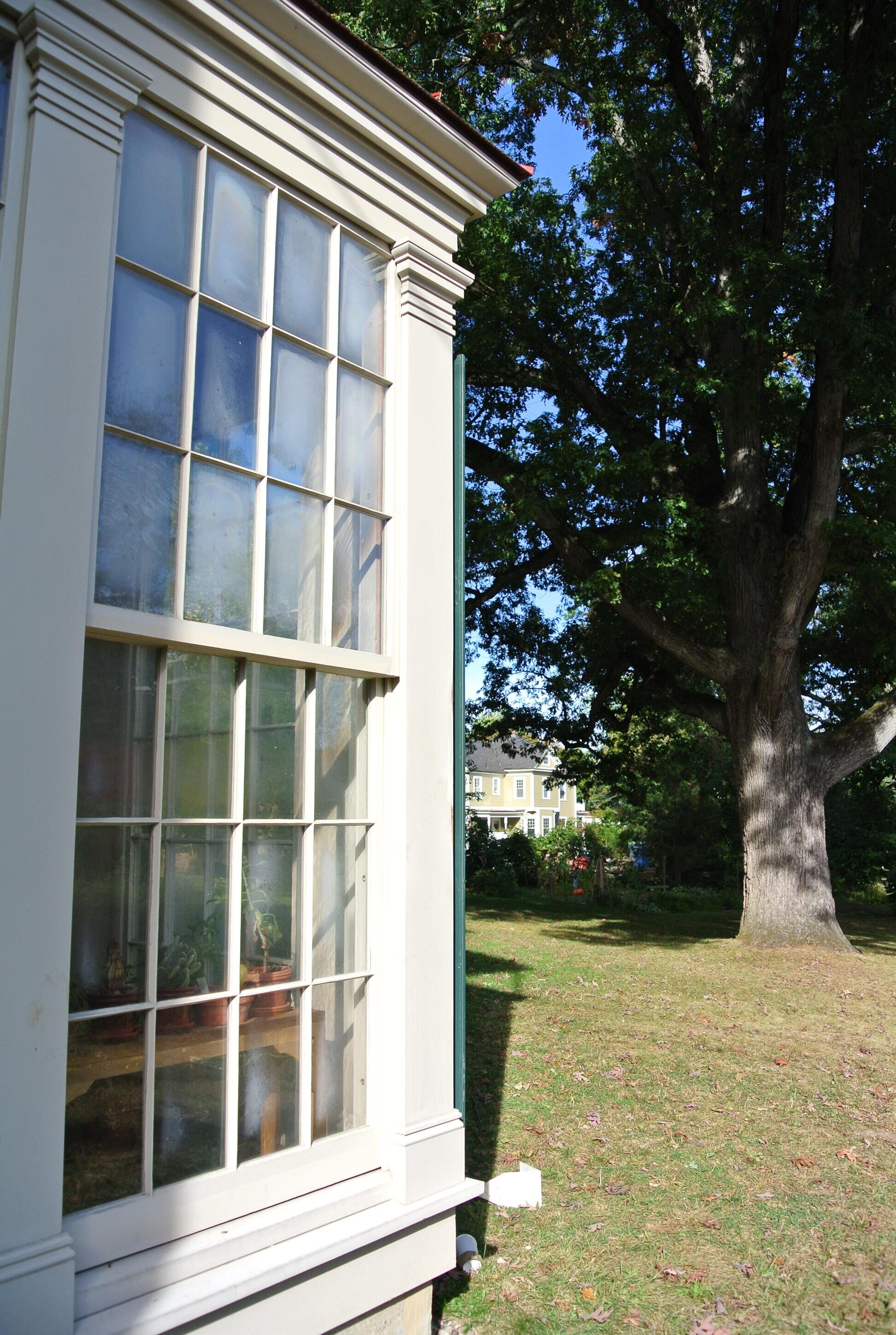
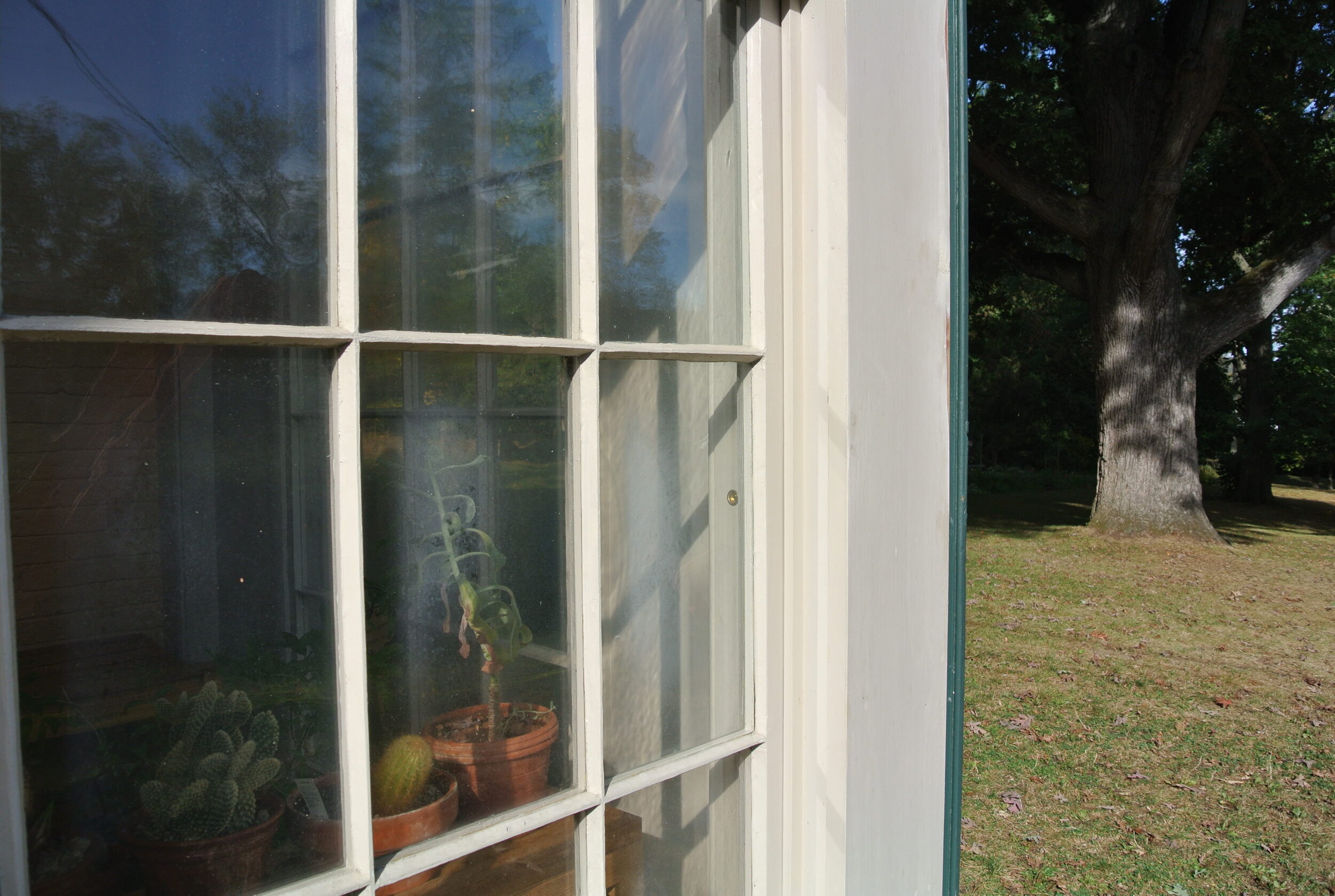
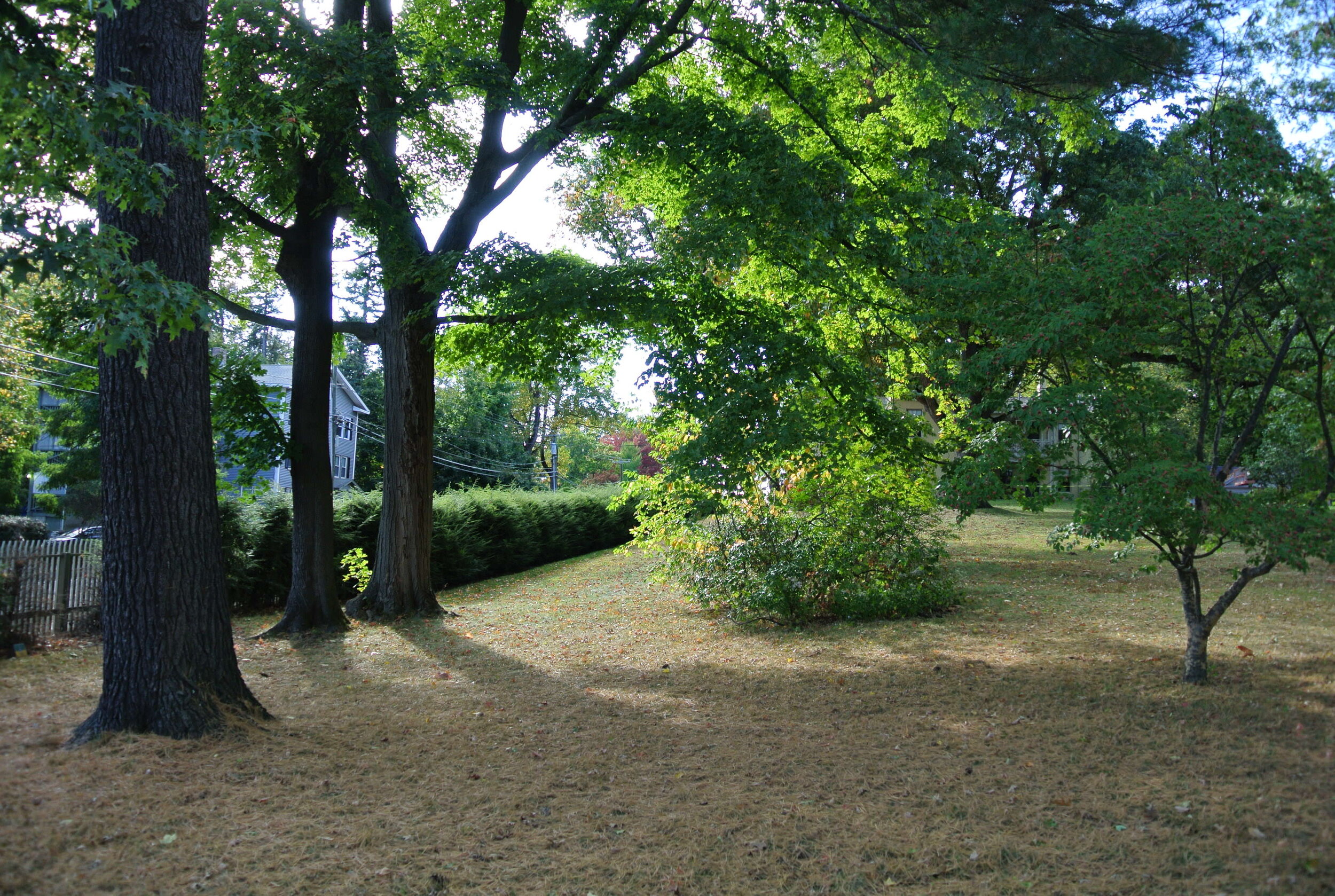
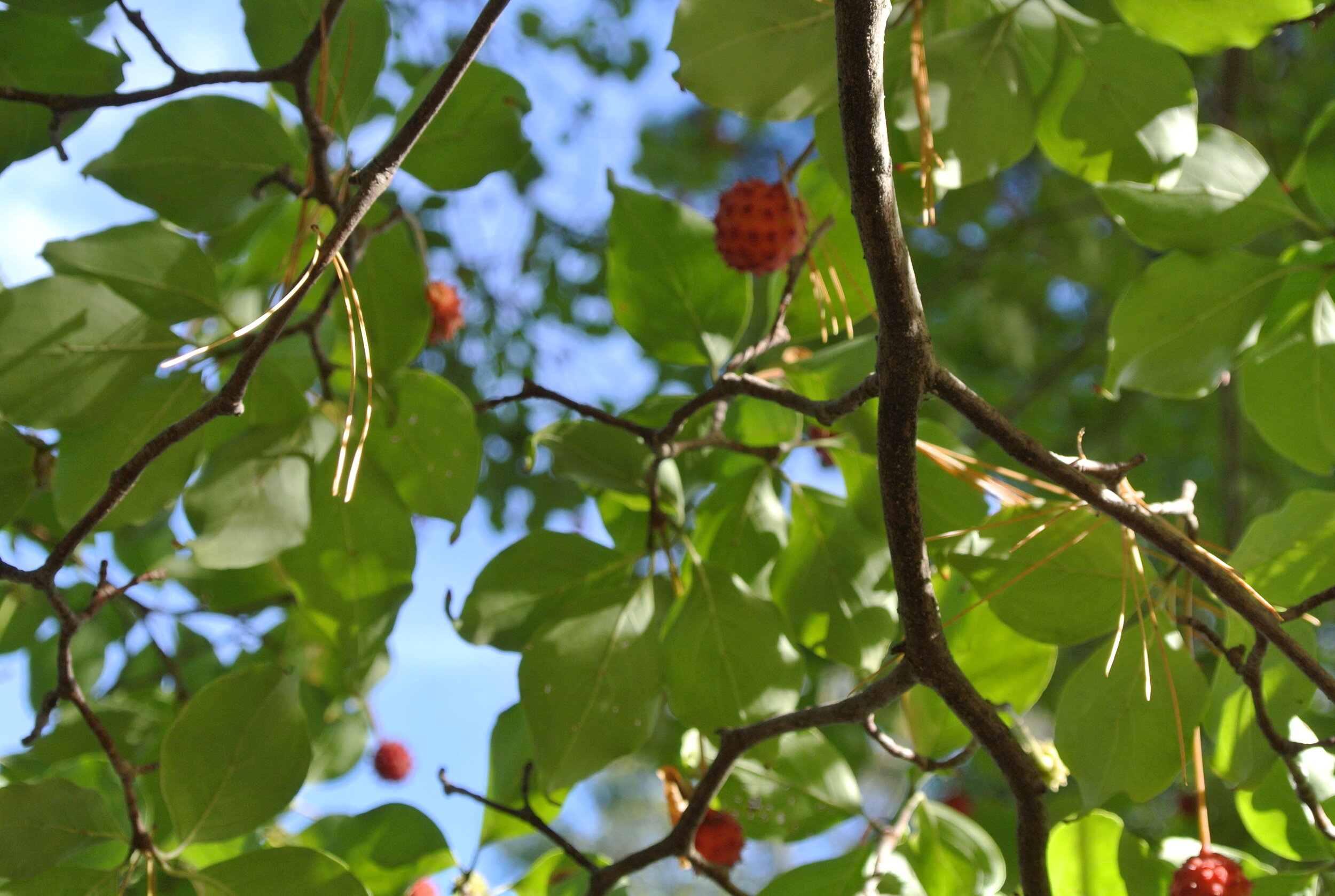
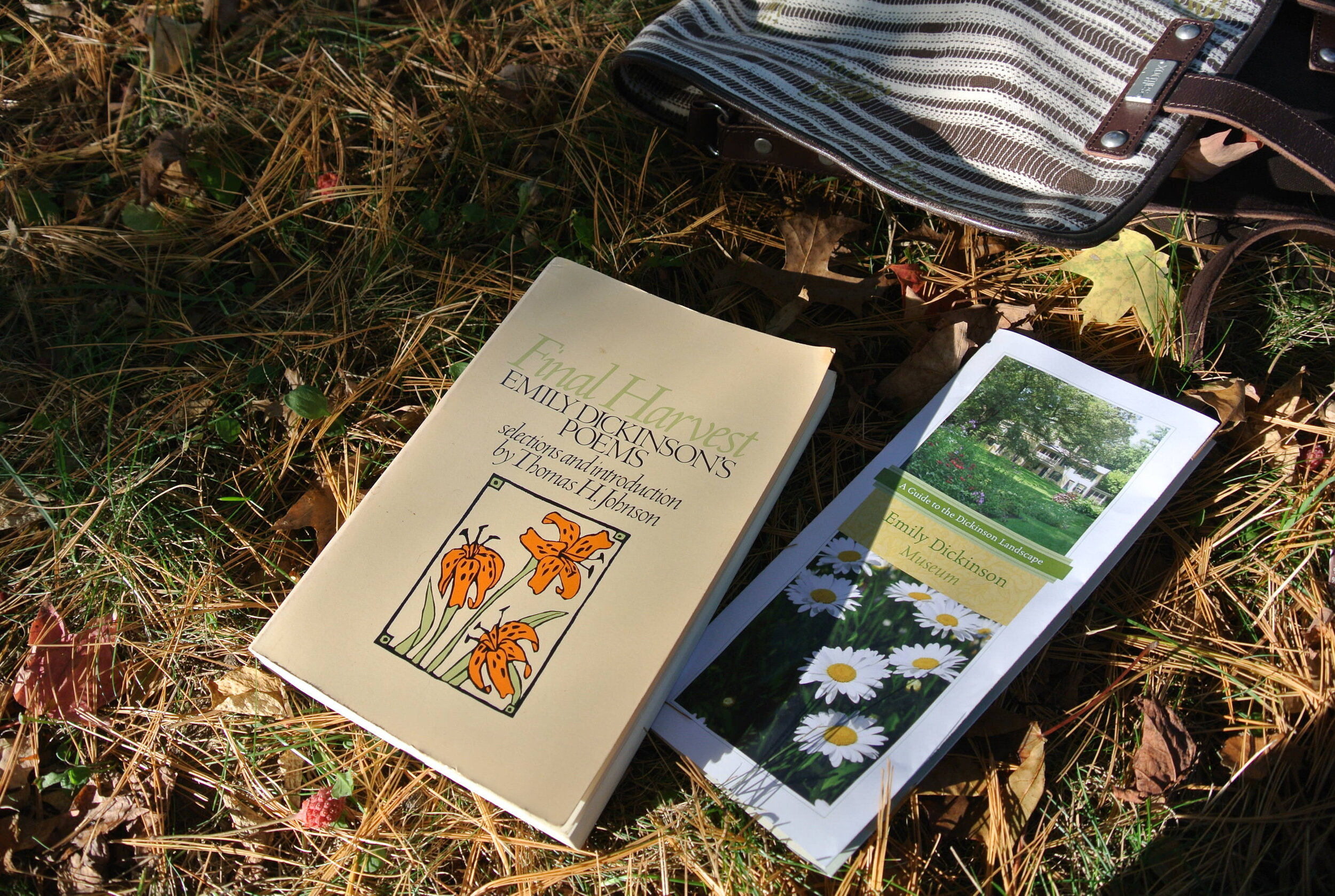
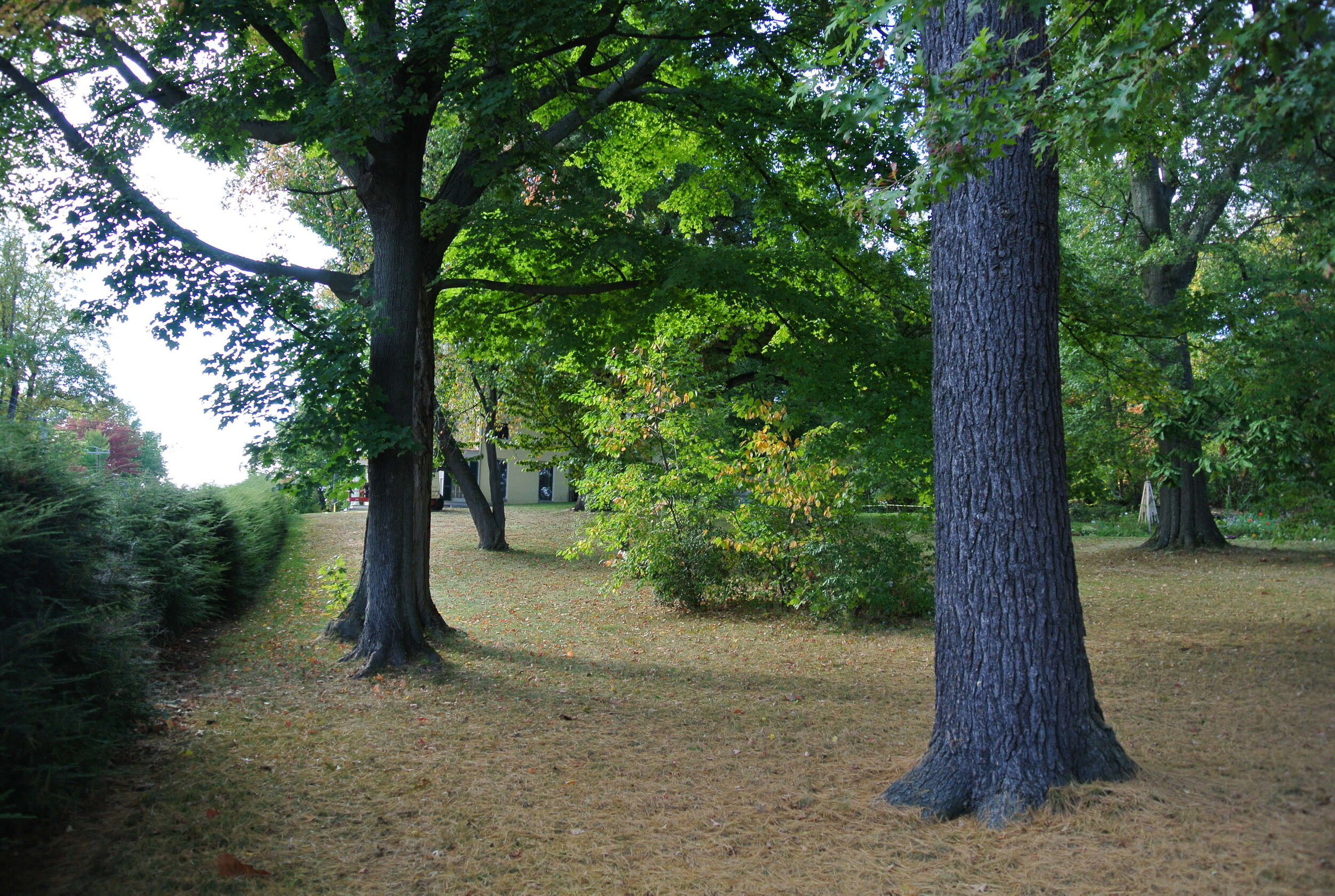
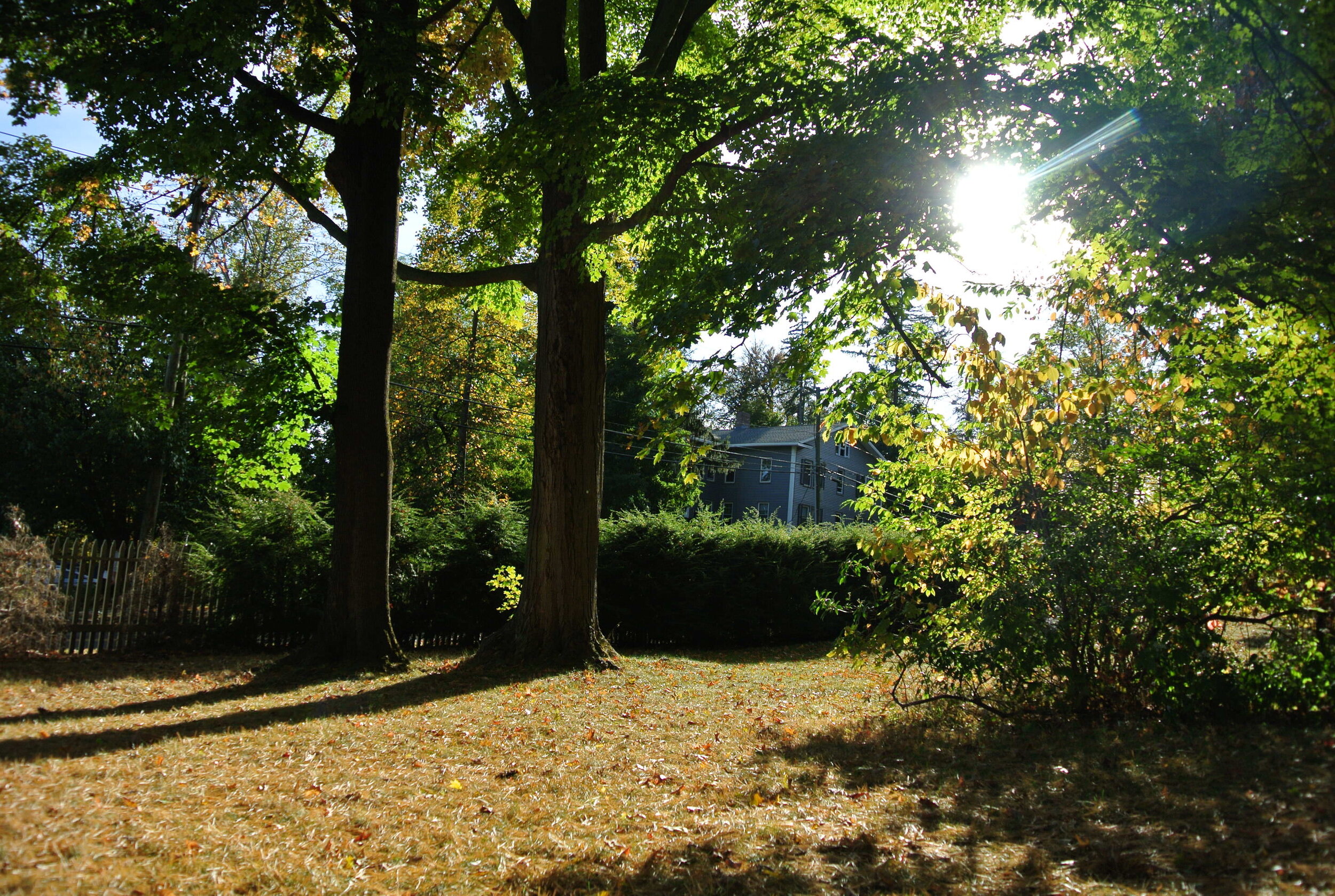
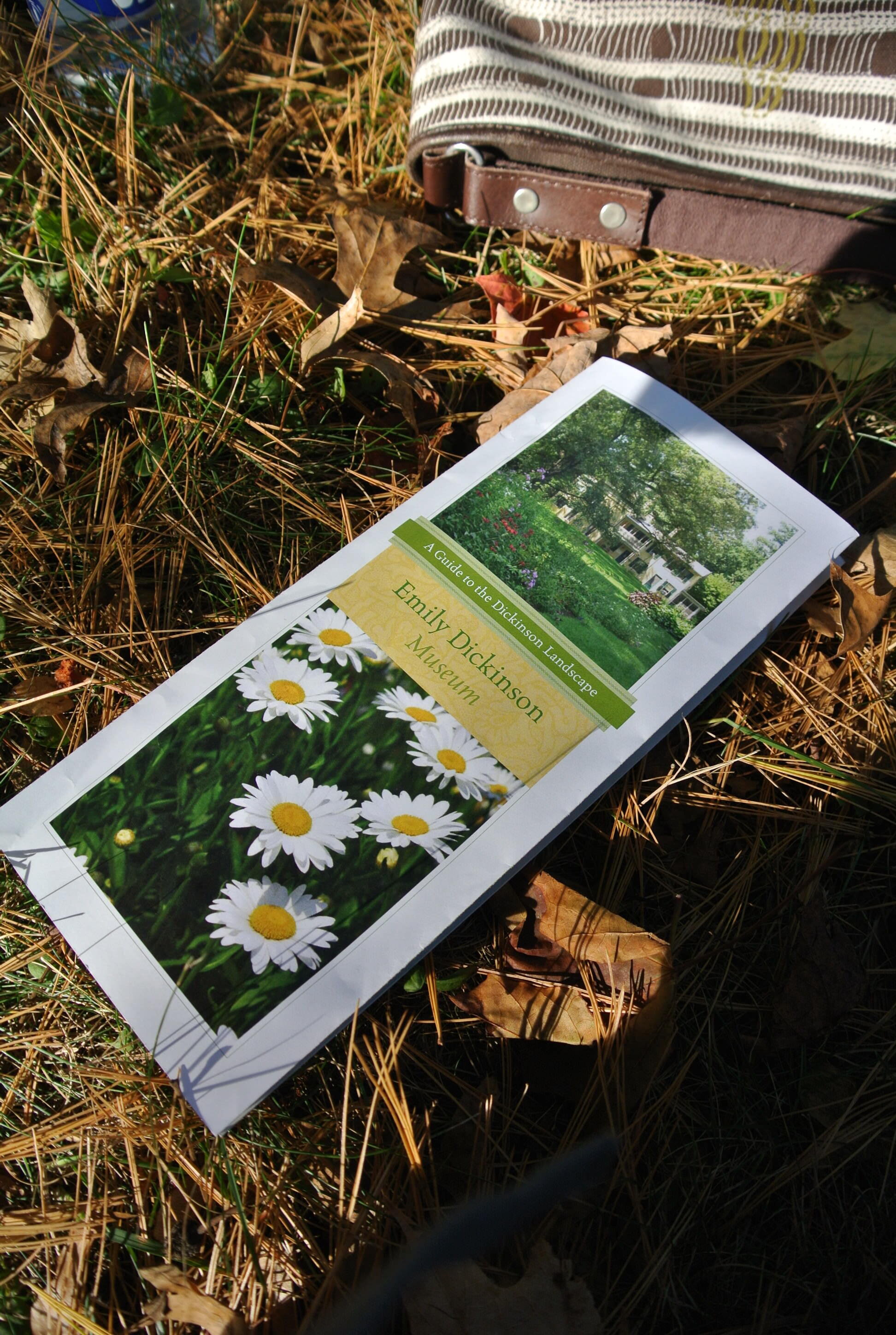
All photographs by Michelle Geffken, paperblogging.com
The Map & The Tour
The landscape tour, “Grounds of Memory” was produced by the Dickinson Museum, narrated by poet laureate Richard Wilbur, with poems read by Mary Jo Salter.
There are eighteen stops on the tour, each with 2-3 minutes of narration and at least one poem. Stops can be taken in any order and correspond with the numbered spots on the map below.
Access the audio tour:
According to the Dickinson Museum, you can access the audio tour:
by calling 413-362-3595 within the US
via a browser-based mobile app (only functions on a mobile device)
I found that if you call the phone number but have to interrupt the tour, the recording resumes where you left off when you call back, so you can take it a few stops at a time.
Map:
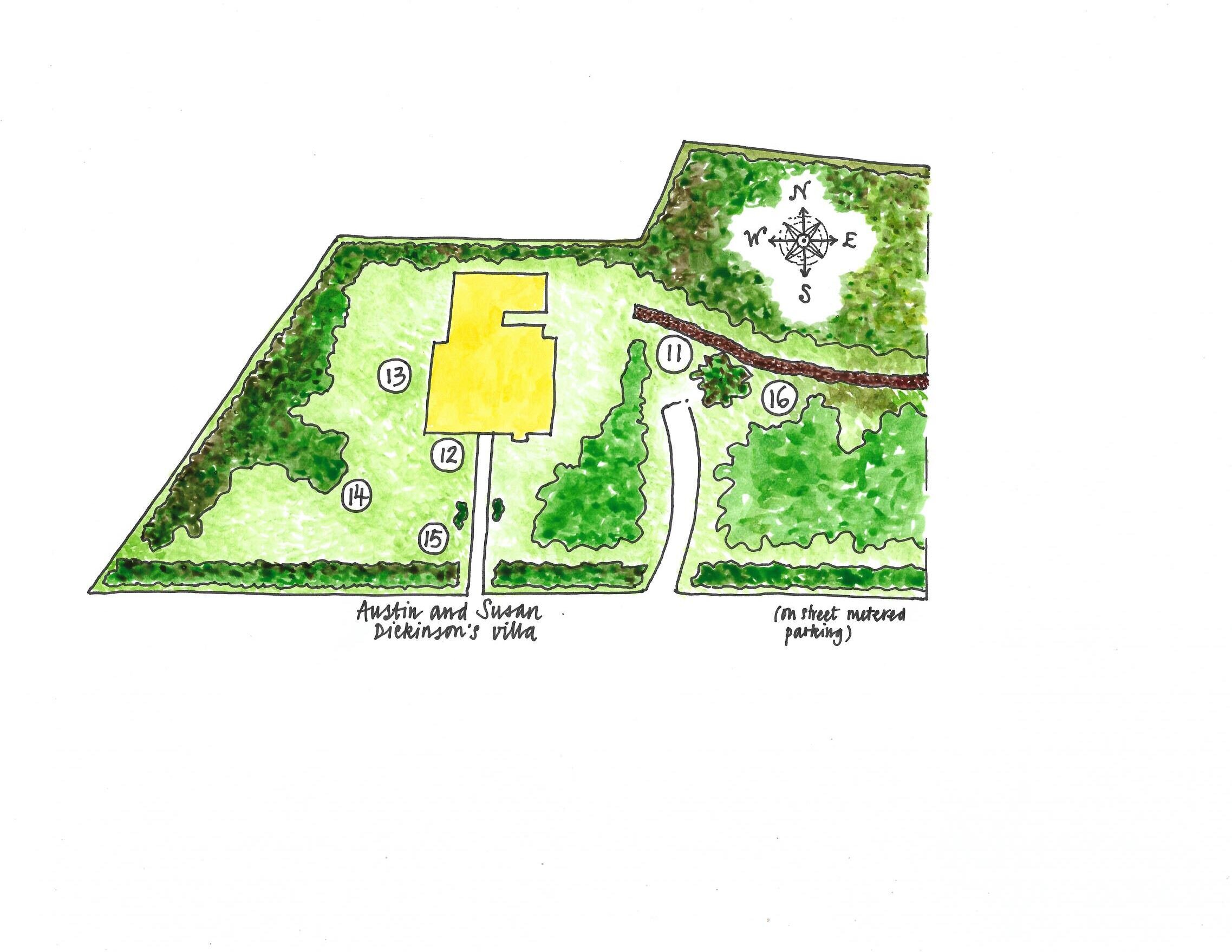
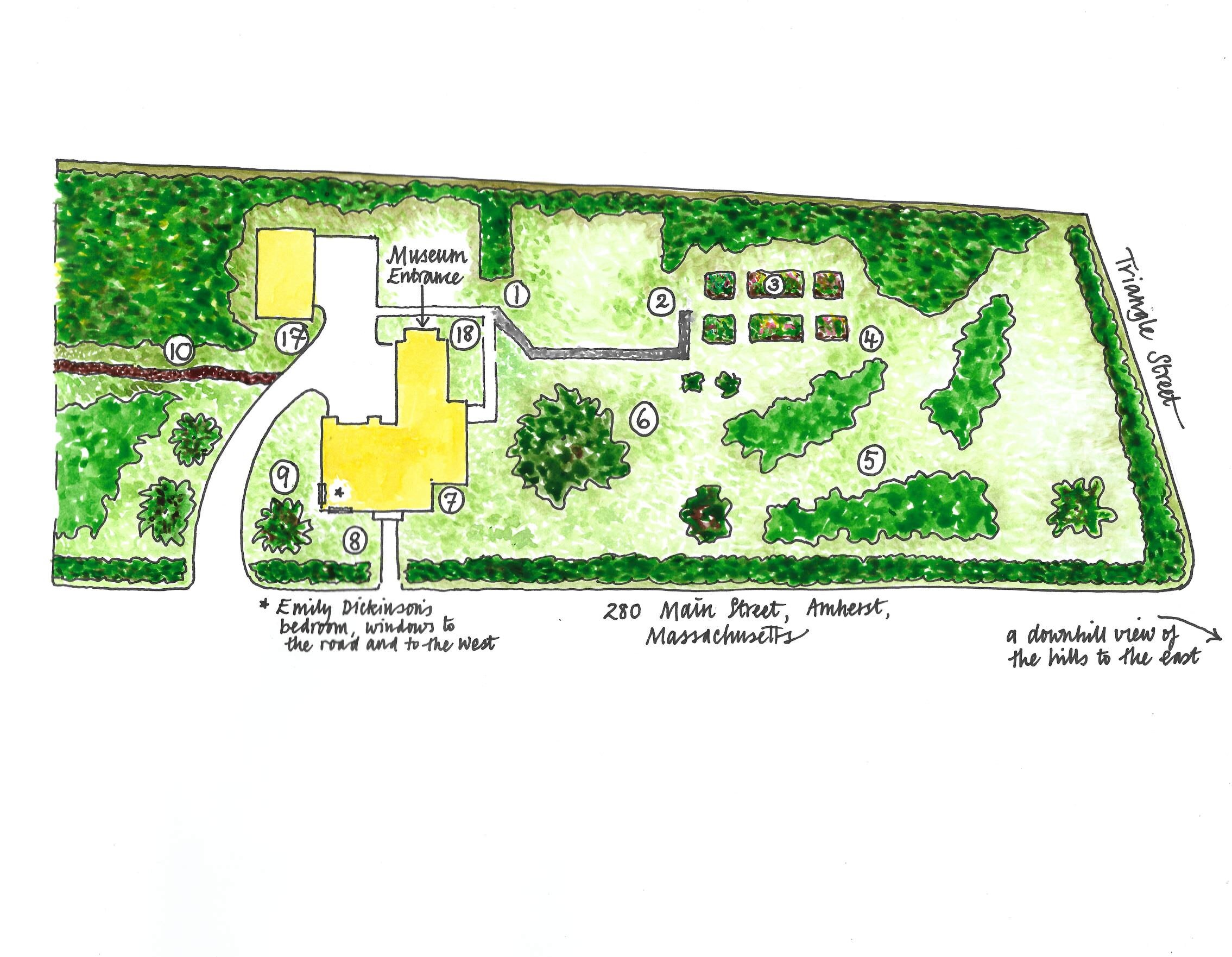
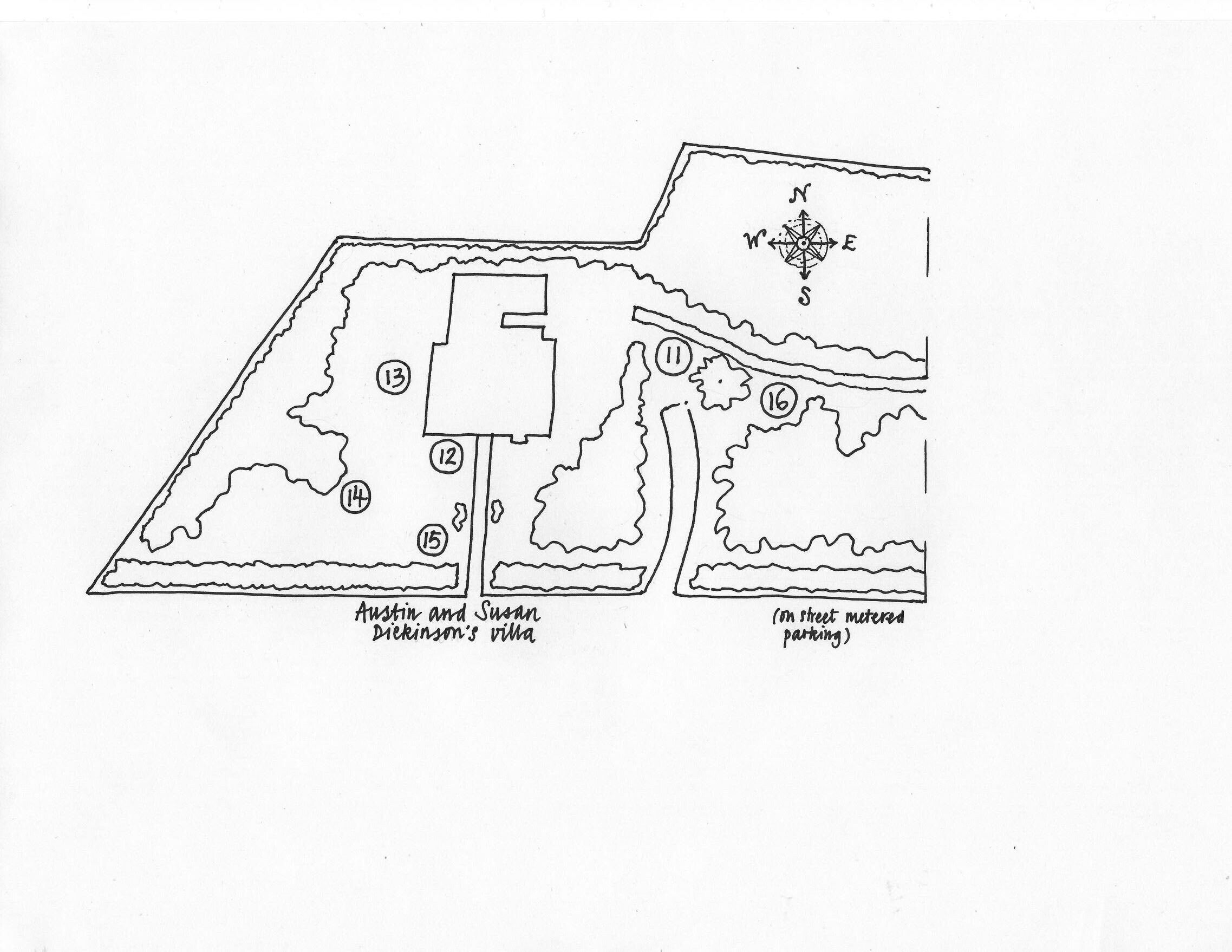
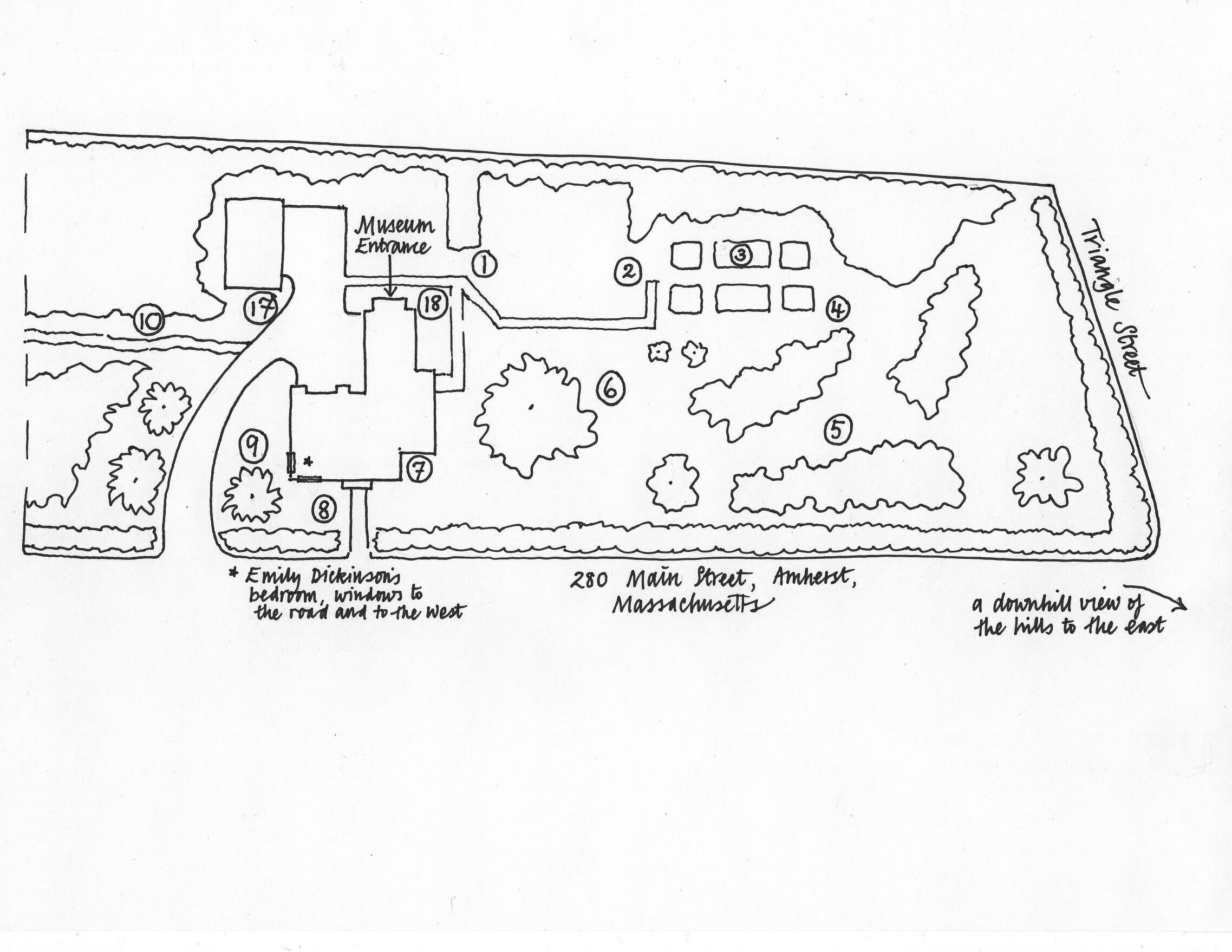
Map: created on Hannemuhle Lettering paper in pencil, Micron Pigma pen, and Dr. Ph. Martin India Ink; based on the Emily Dickinson Museum: A Guide to the Dickinson Landscape brochure, available at the museum. Michelle Geffken, paperblogging.com
Feel free to print a copy of the map, in color or black & white, for your own use.
Tour Stops:
Tour introduction
The Homestead: Flower Garden 1
The Homestead: Flower Garden 2
The Homestead: Flower Garden 3
The Homestead: Main Street and the Meadow
The Homestead: Oak Tree
The Homestead: Conservatory
The Homestead: Front Facade and Emily Dickinson
The Homestead: Emily Dickinson
Path Between the Homestead and The Evergreens
The Evergreens: the Carriage Drive, Austin and Landscape Gardening
The Evergreens: Landscape of Austin and Susan Dickinson
The Evergreens: the Piazza
The Evergreens: the Orchard
The Evergreens: Hedge, Fence, and Terrace
The Evergreens: Austin
The Barn
Tour Conclusion
For more eats and reads
If you’re interested in those chocolate wrappers and recipes, you too can bake Emily’s coconut cake or donuts from recipes originally written on the backs of the poet’s wrappers but now written out legibly for the rest of us.
From the author of the tour!
Highly recommended for an extended ‘visit’ and reissued the day after our visit, by the author of the garden tour, Marta McDowell:
The Herbarium
Finally, Dickinson says she was raised by the garden. You can view the poet’s remarkable Herbarium, thought to have been finished by the time she was fourteen. A botanical book of scientifically pressed flowers, the fragile work was meticulously digitized by Harvard’s Houghton Library in 2006.




